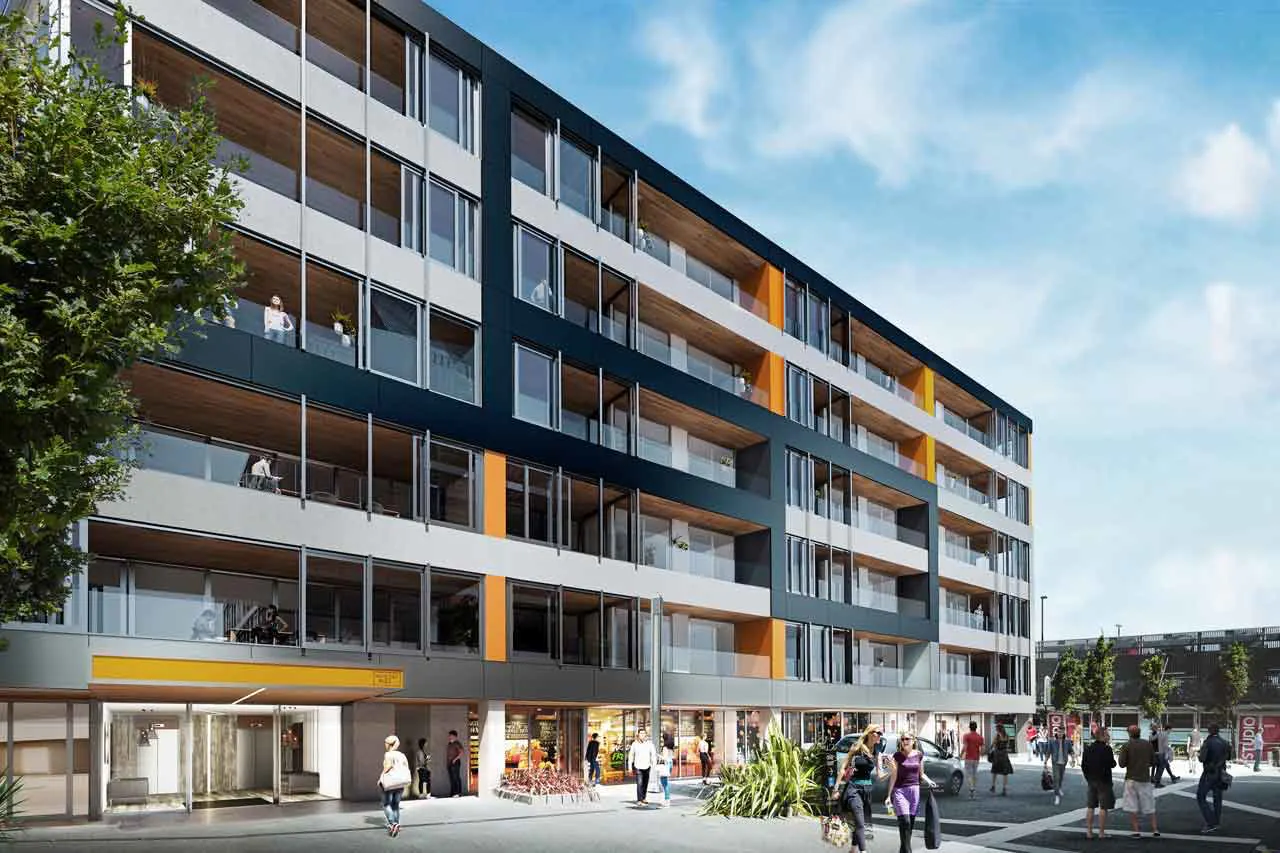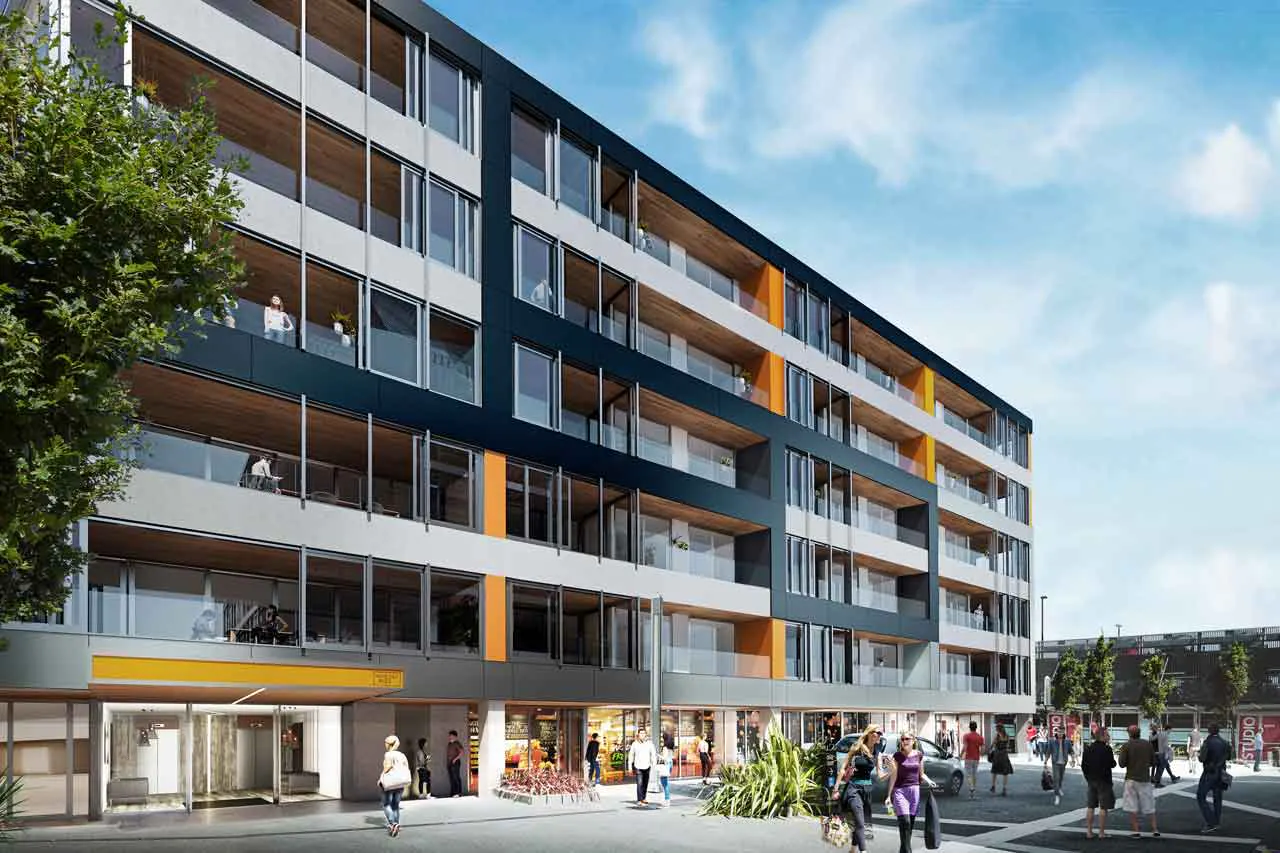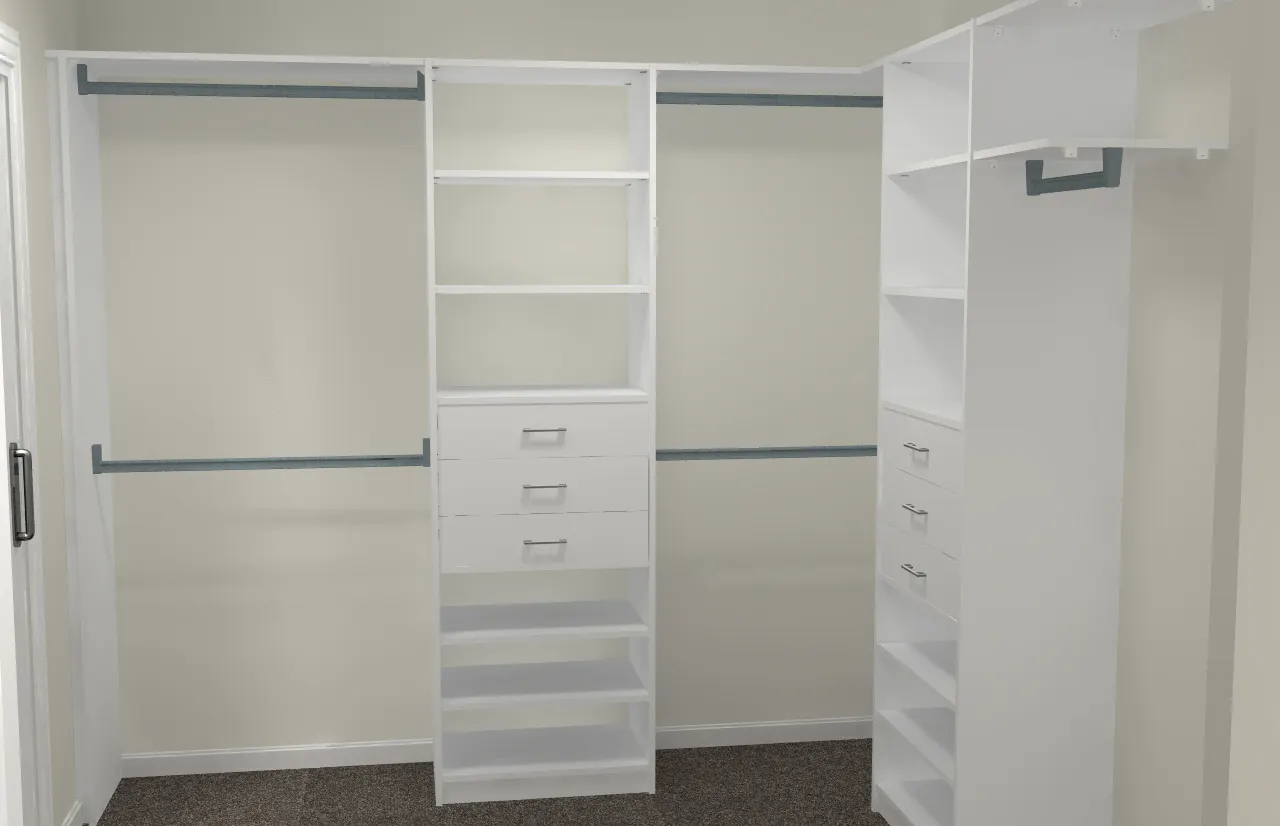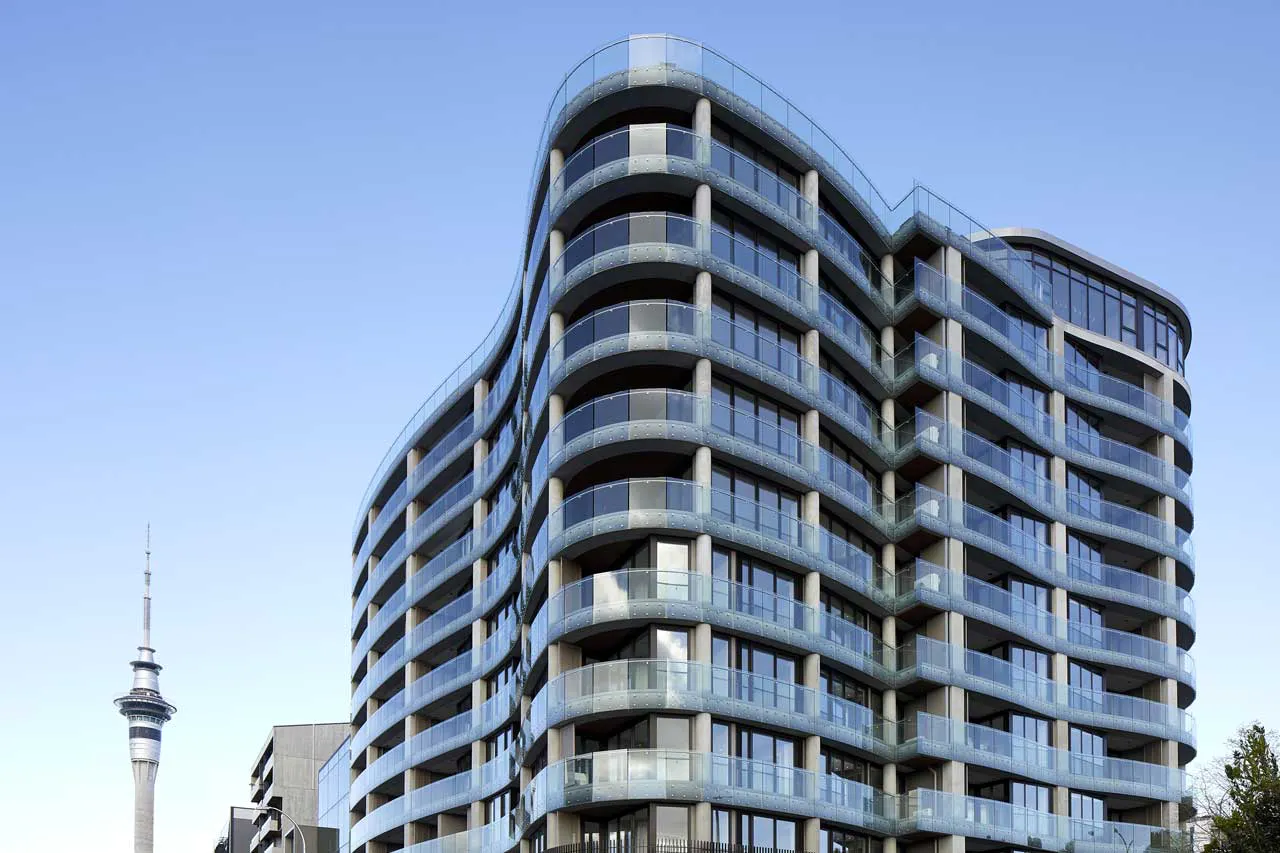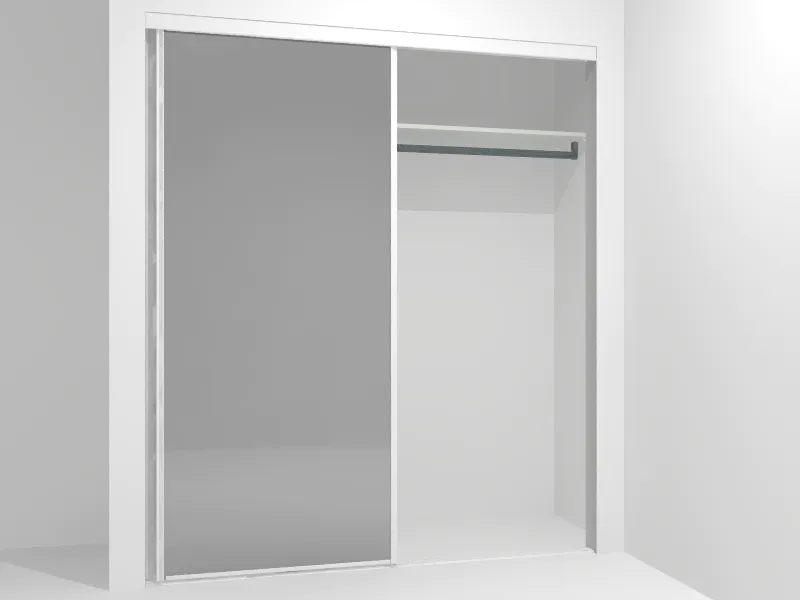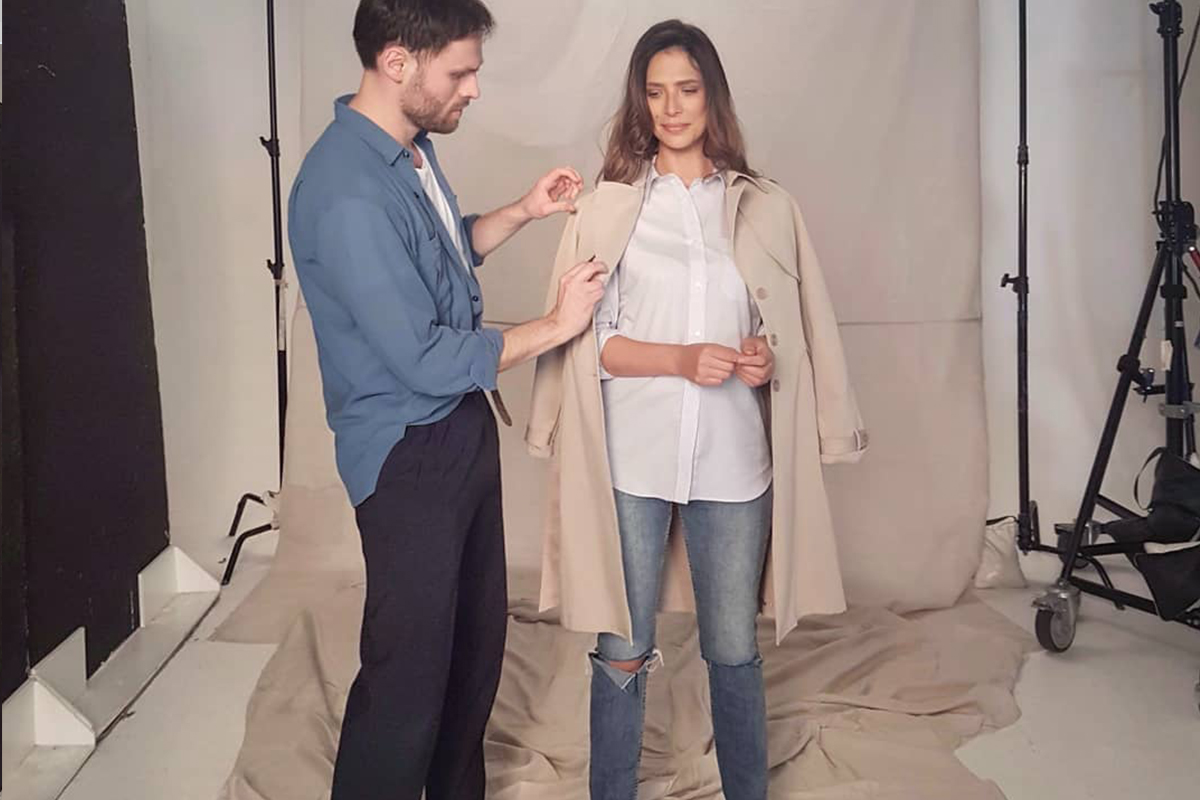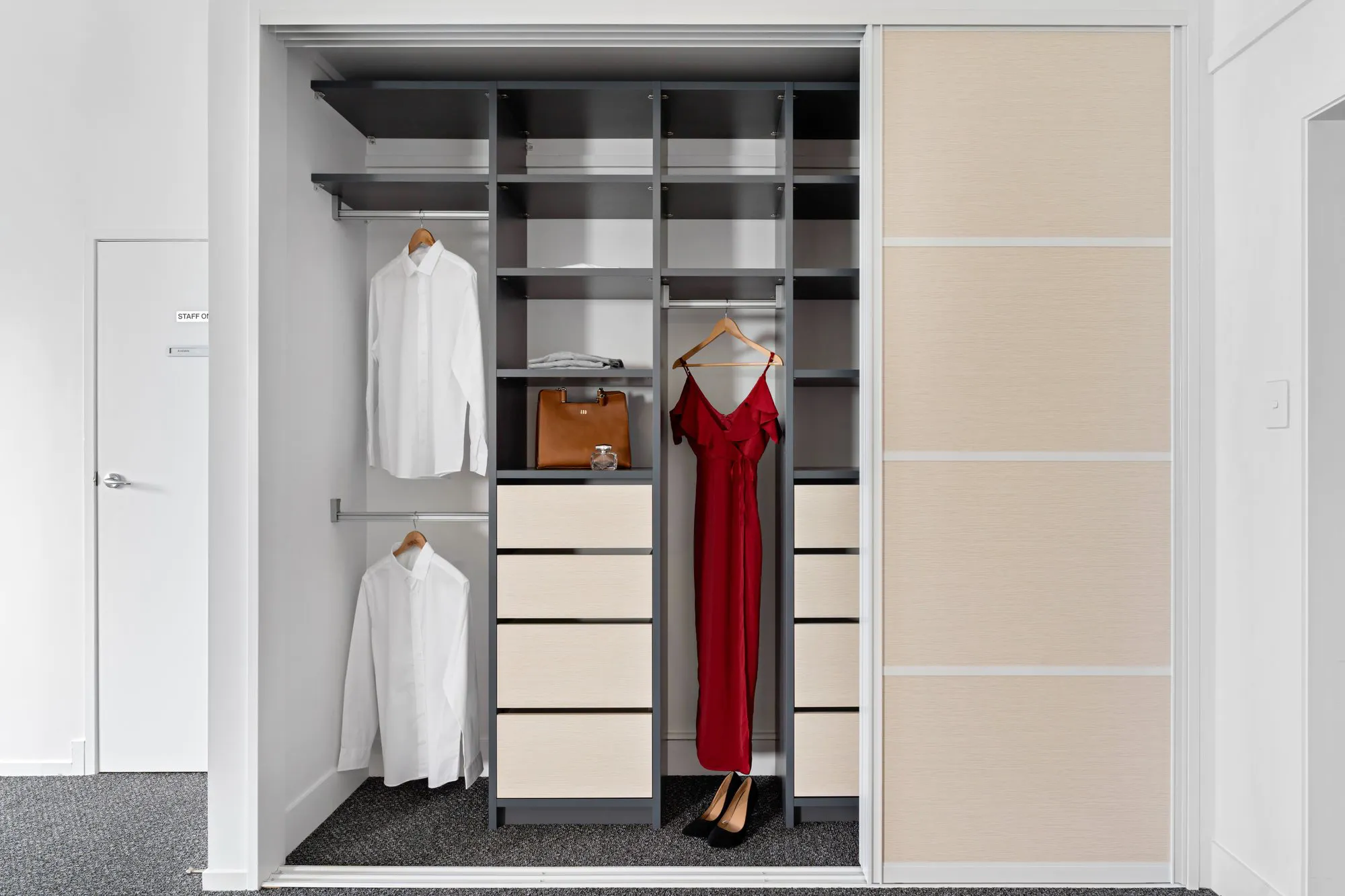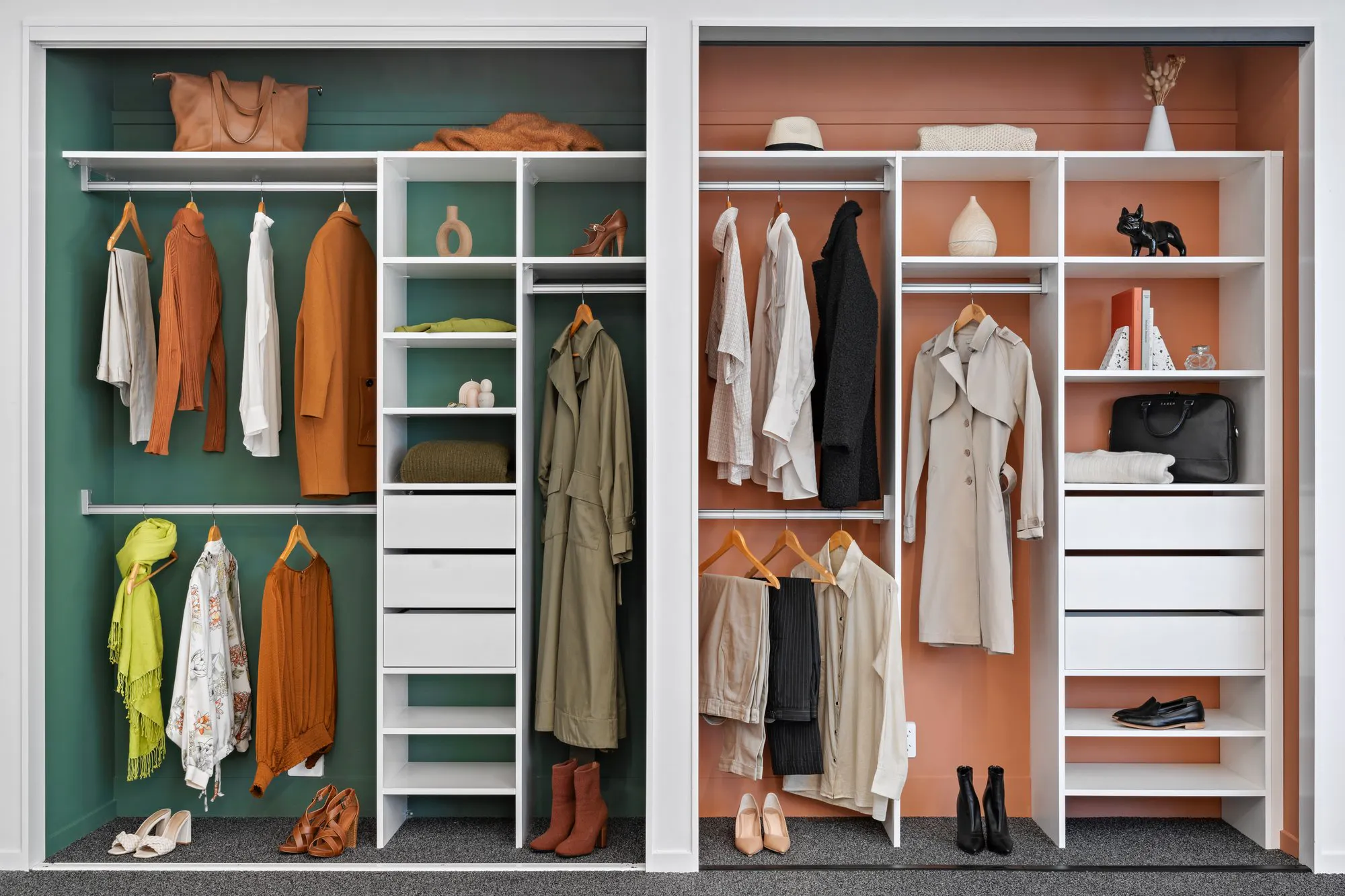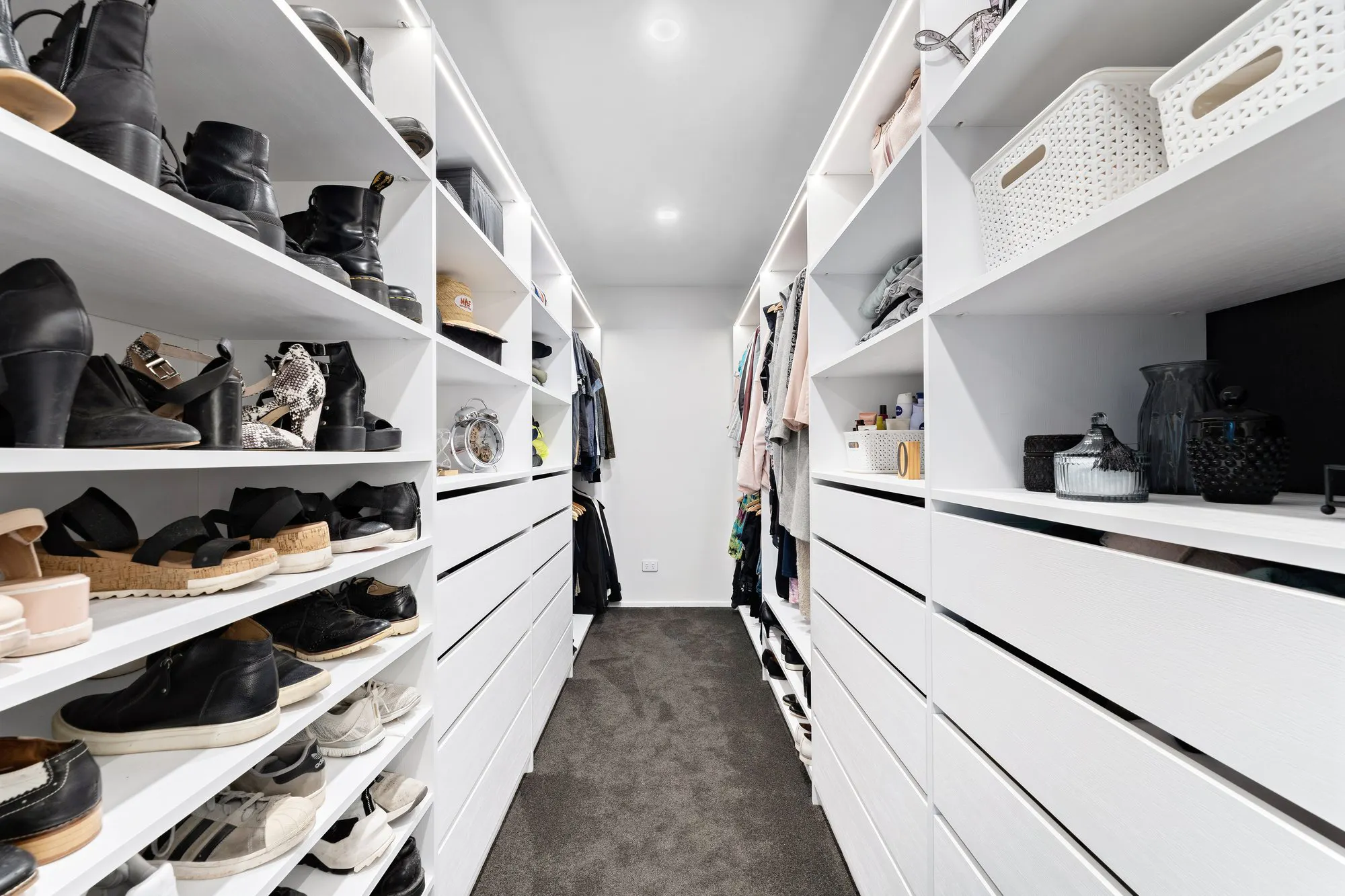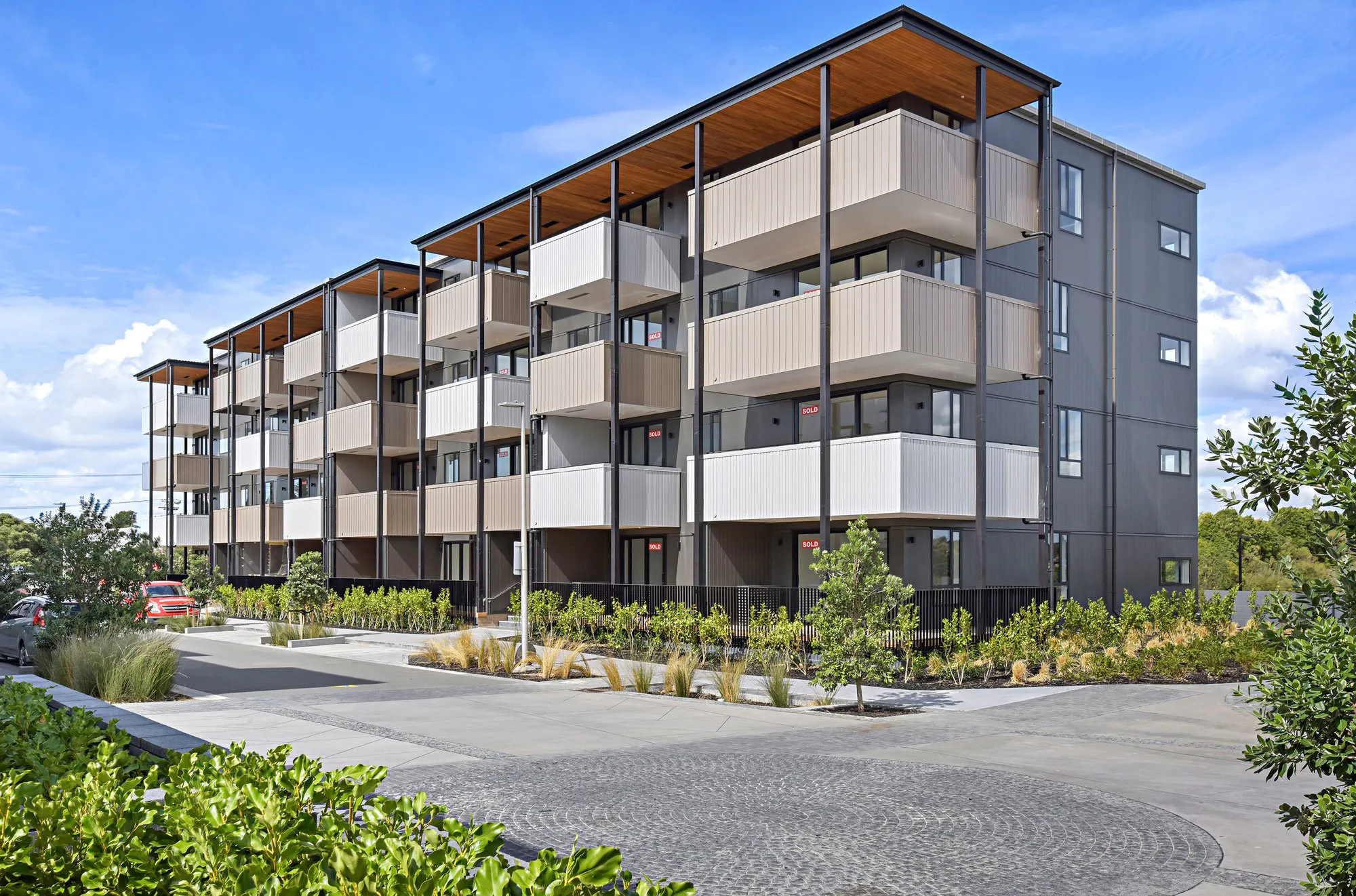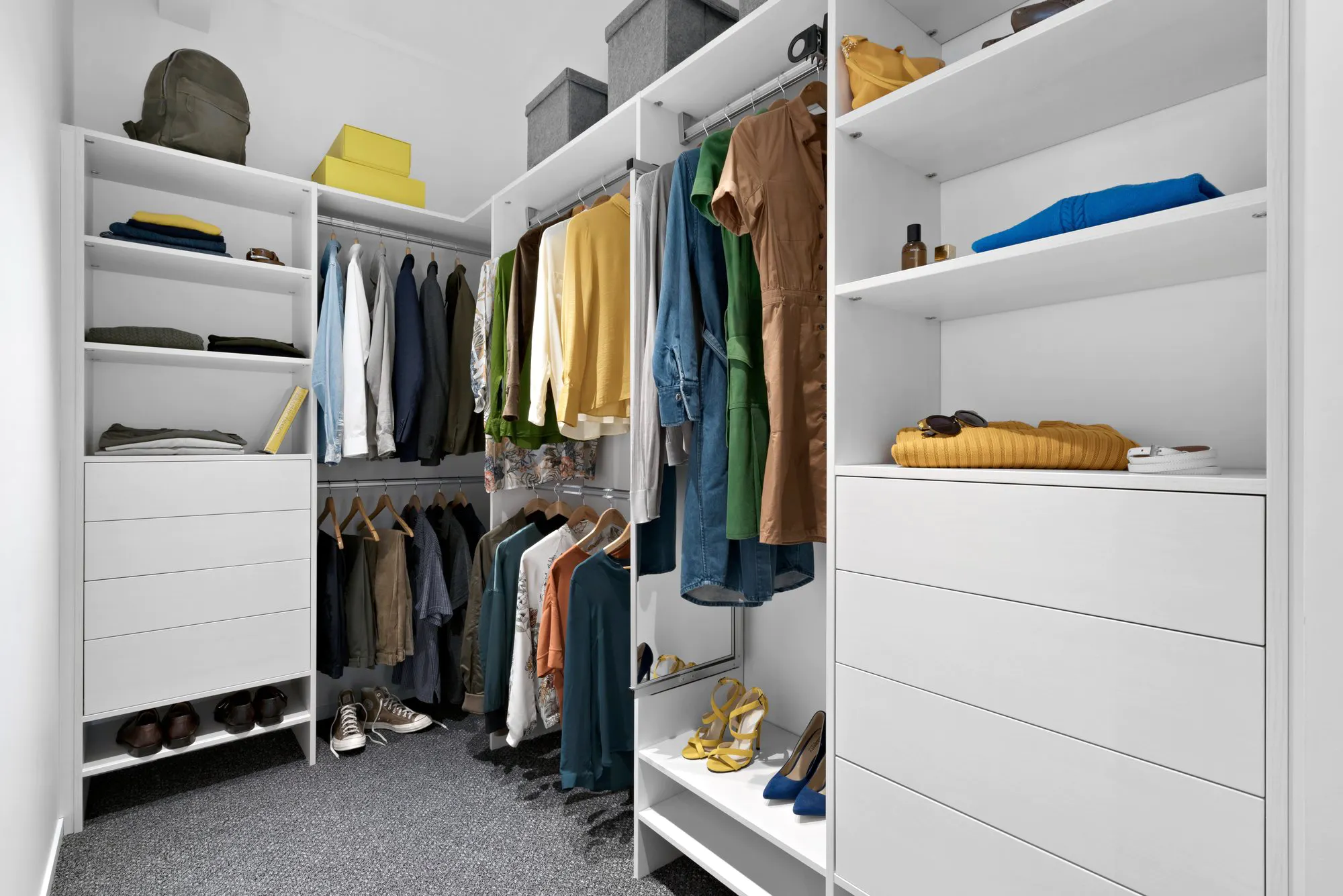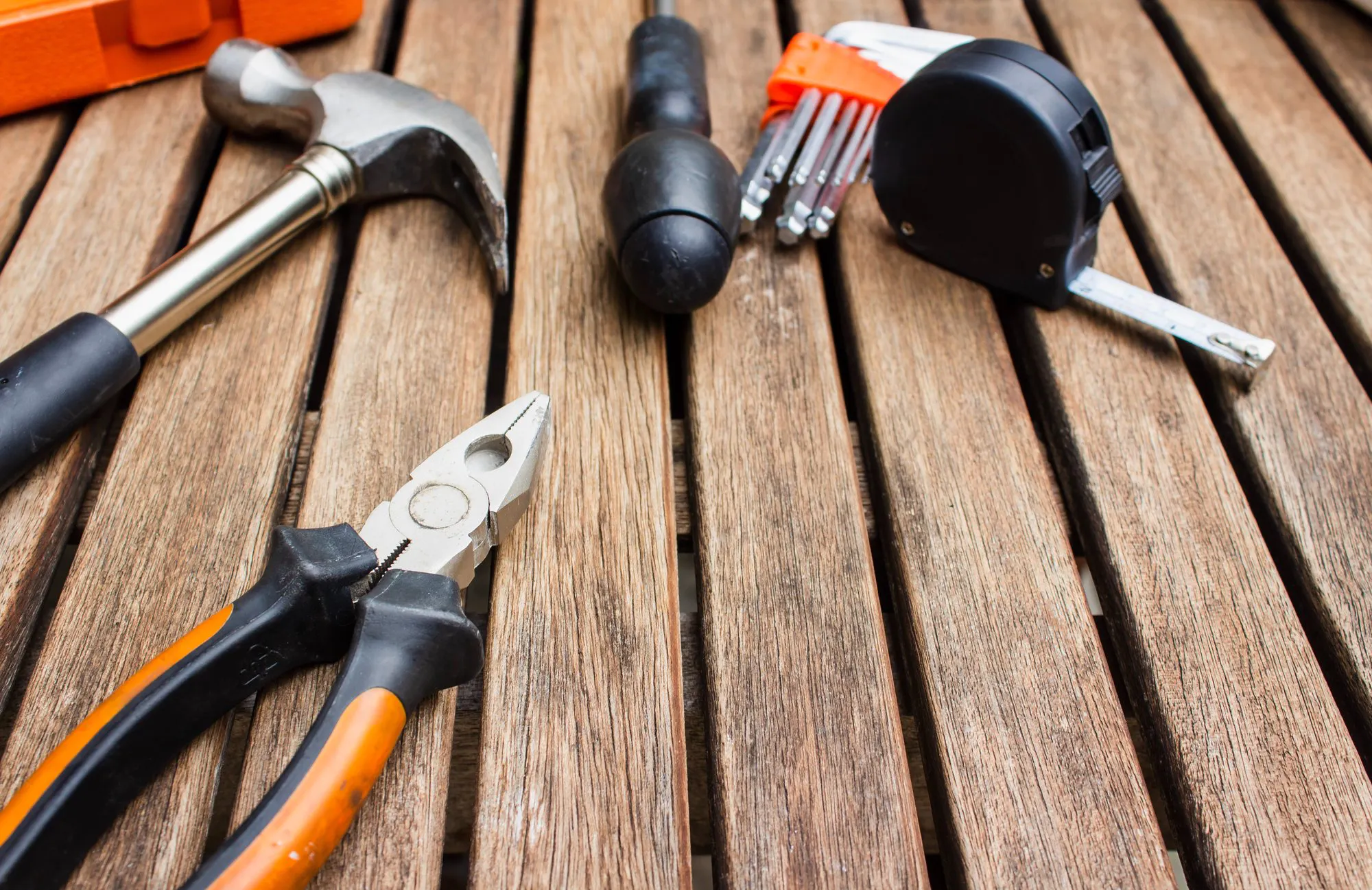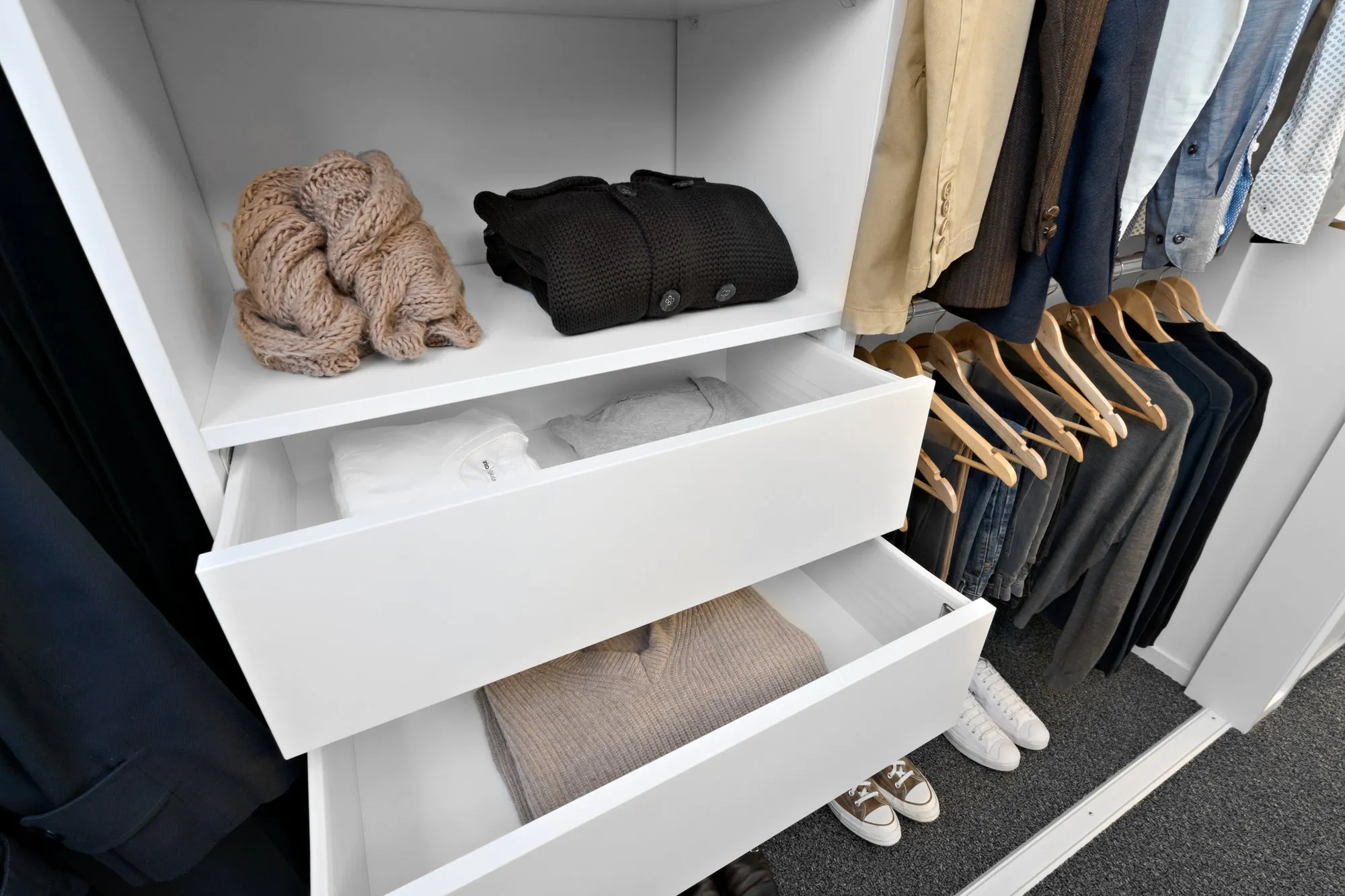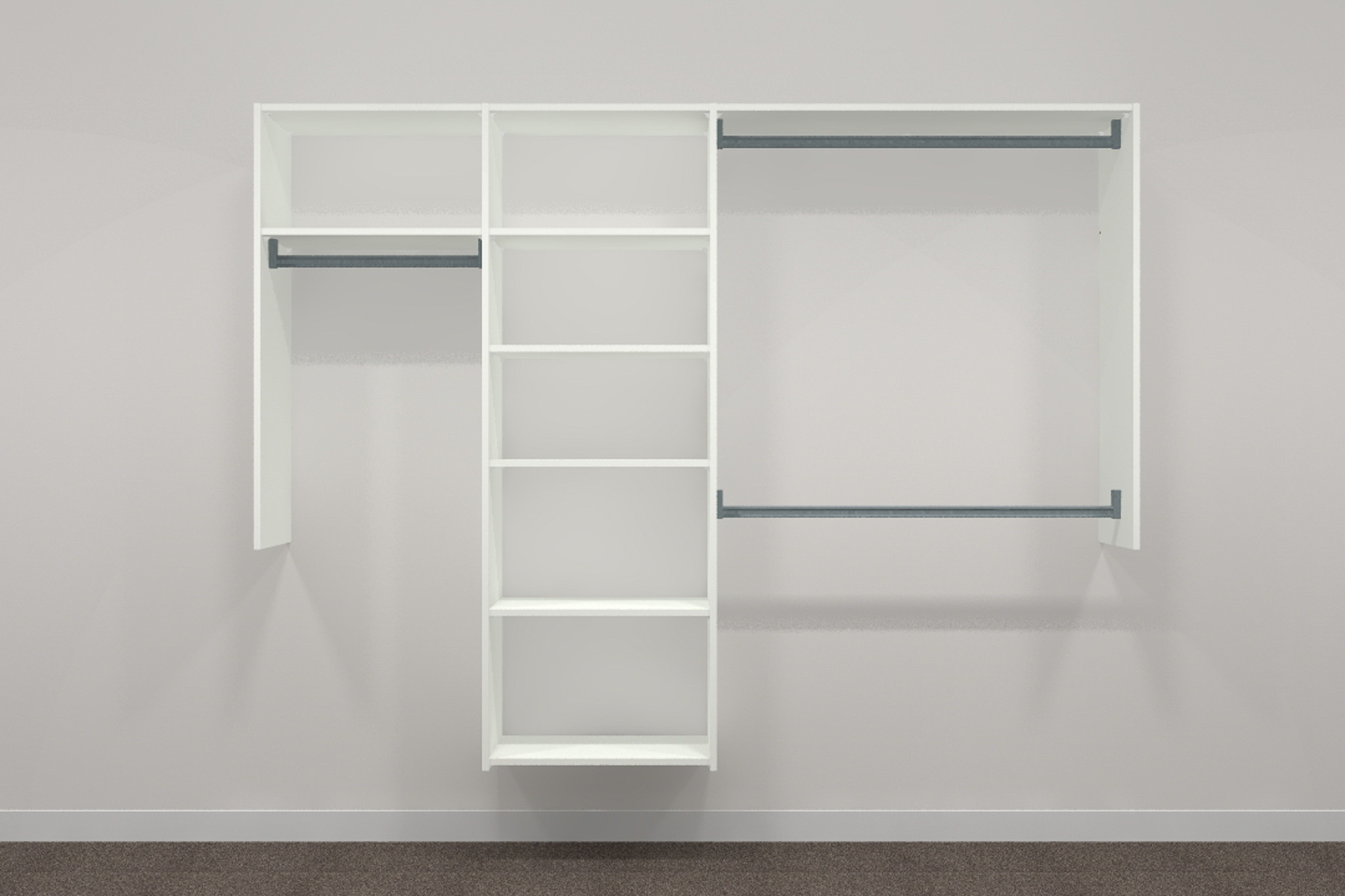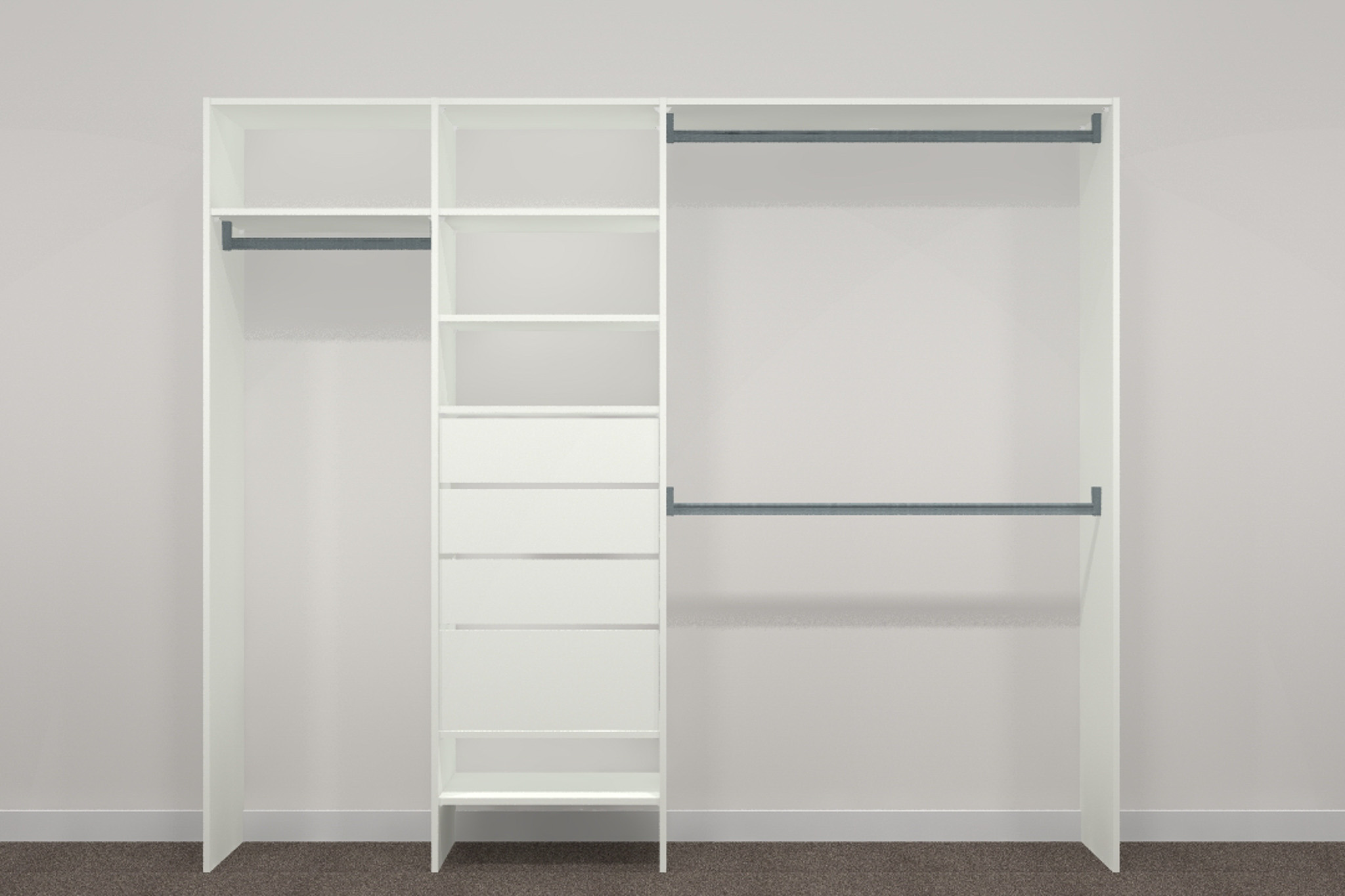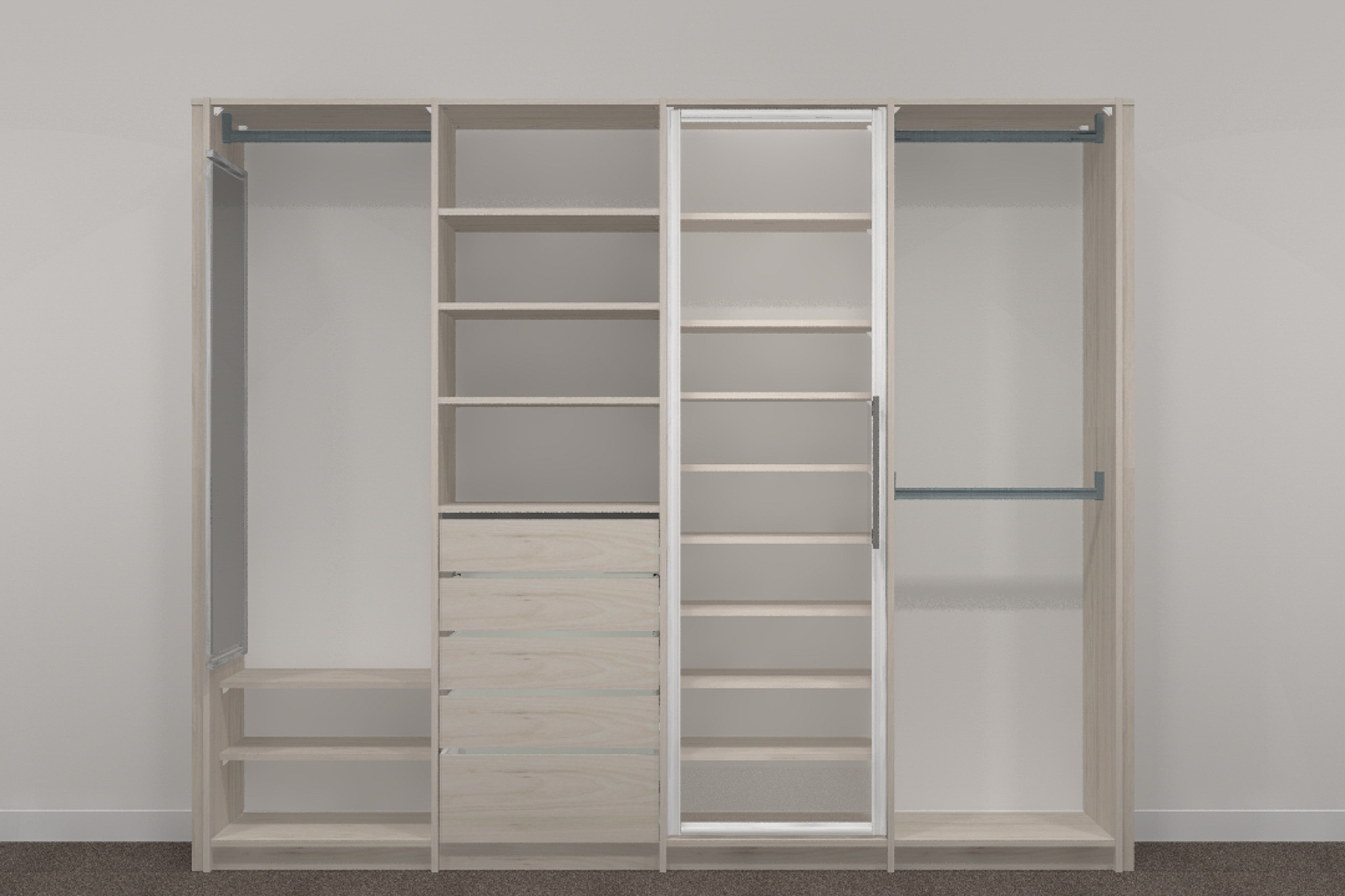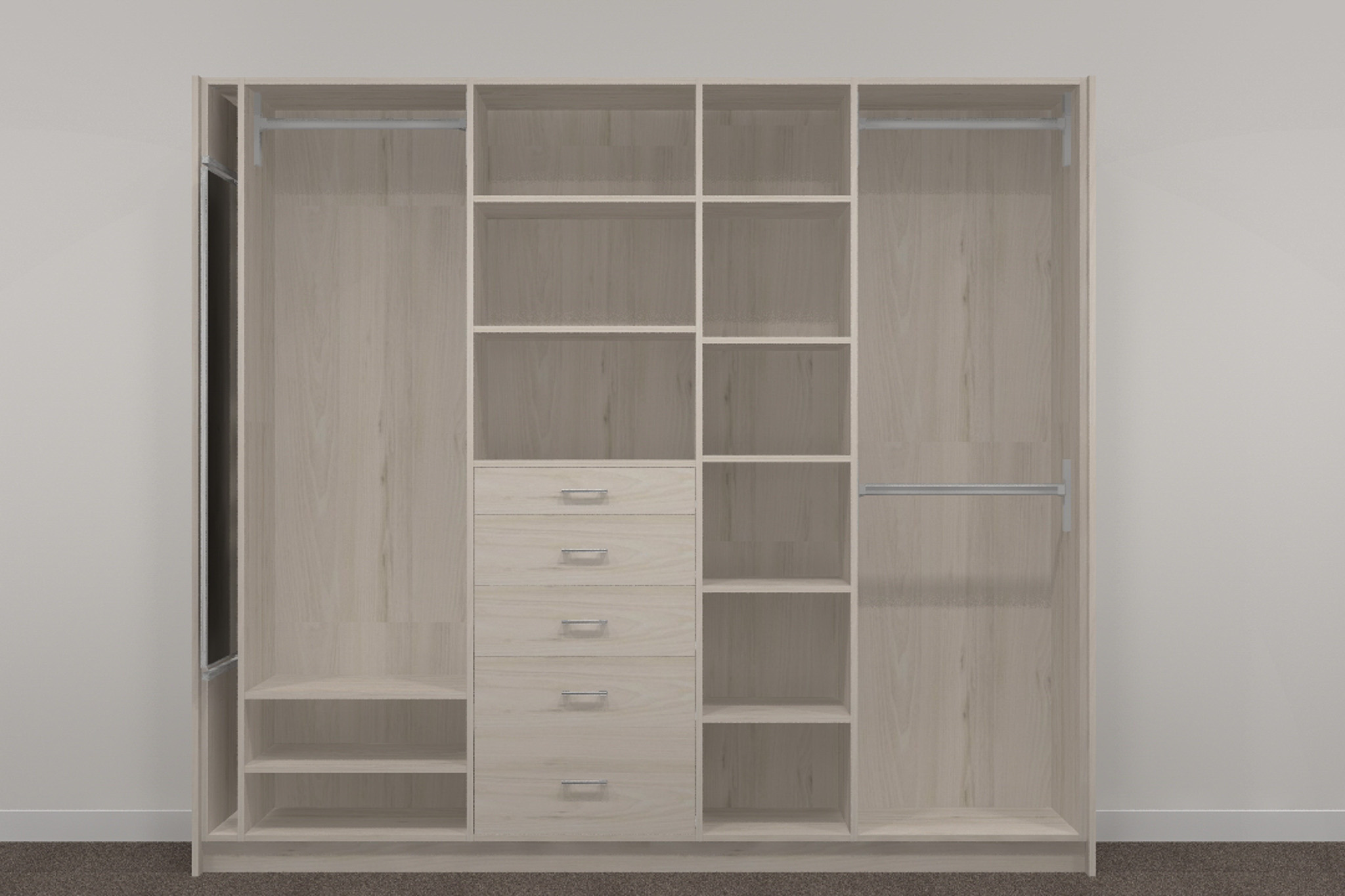Leighs Construction - Nugent Rise
Leighs Construction - Nugent Rise
The six-storey Nugent Rise development, located on the fringes of Auckland’s CBD, is billed as ‘an inspired new advancement in modern city living’. The 17,500m2 complex includes 92-apartments, basement carpark, 600m2 of retail at plaza level. The generously-sized apartments (a mix of one, two and three-bedroom units) feature full-height double-glazed windows, which maximise the effects of natural light and create a greater sense of space. The apartments all have recessed fully enclosed balconies, with a cedar soffit.
Client
Leighs Construction
Location
Grafton
Completion date
September 2018
Number of dwellings
92
Other commercial projects
Nothing found.
Macrennie Construction - Grace Apts
Macrennie Construction - Grace Apts
Grace features beautifully designed freehold apartments, an unrivalled Residents Rooftop Retreat with outstanding 360 degree harbour and city views, beautiful courtyard garden and superior design by internationally acclaimed COX Architecture. Developer: Reside & Little Projects
Client
Macrennie Construction
Location
Victoria Quarter
Completion date
September 2019
Number of dwellings
105
Other commercial projects
Nothing found.
The elements of style from a personal stylist
The elements of style from a personal stylist
The elements of style from a personal stylist
Vlad Tichen talks us through perfecting your personal style and caring for your dream capsule wardrobe.
Vlad Tichen is a personal stylist with over 20 years experience in the fashion industry. He consults one-on-one with people looking to refine their style and level up their wardrobe. Vlad also styles commercial photoshoots, holds corporate team-building workshops on finding your business style, and, not least, choreographs the contents of the wardrobes for Boston’s photography. He’s unassuming, talented, and a fun guy to be around. Vlad generously sat down with us to share his wisdom on finding your style and how to get the most out of your collection.
How did you come to do what you do?
I usually answer that question by saying – by being terrible at everything else!
But actually, I have worked in fashion retailing and wholesaling my whole career. I have always been very interested in how people communicate their personality to the world via how they present themselves. Not just their clothing but also their hairstyle, their manner, their language, the way they joke, this all makes up your personal style, in my opinion.
Also, how lack of attention to this can negatively affect how you view someone. If I see a person presenting on stage but I can see some ketchup on their shirt or some beat-up shoes – I’m not going to be able to take what they are saying as seriously, it loses a bit of value in my mind.
On a subconscious level, I think the way you dress is a sign of respect for yourself, and also for others. It shows that you are confident in your place in the world and of your capability. I love the psychological aspect of personal style.
So I was really interested in this, and over time I developed my own sense of style and taste. I started dressing my friends when we were teenagers, and it sort of grew organically from there into a part-time gig in Europe. I moved over here and kept it as my side hustle until eventually I was able to make it my full-time job about eight years ago.
I love what I do, it’s an amazing feeling, to be part of a positive shift in someone’s life. I’ve seen people literally transform their life – improve their career, their personal lives, all from the confidence they gain when they know they look their best. It’s a reciprocal effect because if you present professionally and well put together, people treat you with more respect, which in turn gives you the confidence to be that person.
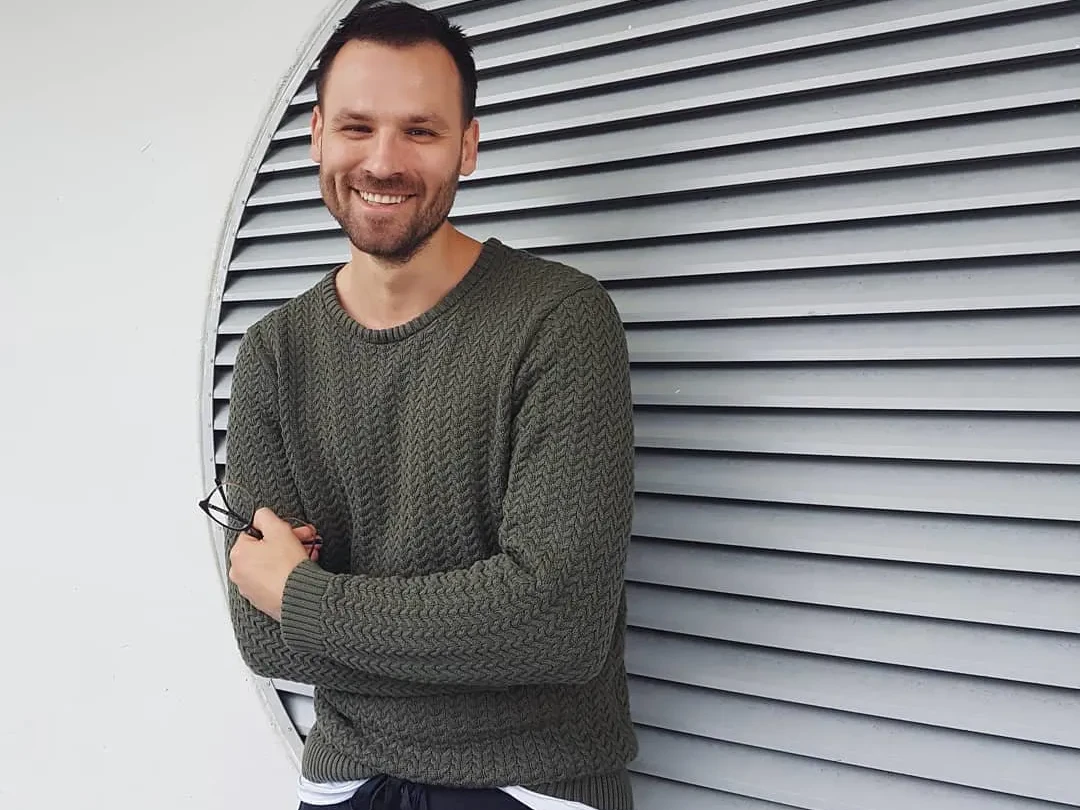
What would you say are your top fashion rules?
Well first of all I want to differentiate between fashion and style. We’re talking about fashion as a progression of different tendencies. Sometimes it’s provocative and it can be quite forward, and also erratic. Personal style is slightly different.
Compare fashion with an ocean storm: if we have huge tsunami waves of fashion trends, with personal style, we’re talking about a smaller wave. Your style evolves slowly over time as opposed to rapid changes with the trends.
Trends do affect people’s personal style – for example, the tendency to wear high waisted pants with pleats in the fifties, it would be a bit hard for someone to wear really skinny pants with a low rise, even if it was a part of their personal style. Although right now, we can have a personal style that could be quite different from the mainstream fashion, it’s not as rigid as it was in the fifties.
I would say my main advice for personal style is to know what fits you well and to invest in getting your clothes tailored.
99% of clothes are “ready to wear”, off the rack. So you buy something and it’s made to fit pretty much everyone. That’s why most of the fits are too long for most people, because if shirt sleeves are too long, people will still buy it. If they’re too short, they wouldn’t. Psychologically for people, it’s hard to accept the fact that if I paid $200 for a shirt, why do I need to pay another $50-70 for shortening the sleeves? But it’s so important.
It’s not cheap to get things altered. But the idea here is that you are making this item truly your own, to fit and accommodate your unique body and present it in the best way possible. You won’t have to subconsciously change the way that you move or sit or stand to accommodate ill-fitting clothes. If you start worrying about these little things, they occupy your mind and then throw you off your game. Invest your time and money in some professional advice from your tailor to alter your clothes.
If you buy a pair of jeans, Make sure that they’re the right length. If you have an additional 10 cm bunching at the bottom of your feet, it’s not going to make you look good. If it’s a coat that looks quite cool, but the sleeves are long, make them a bit shorter. If they’re too wide, slim them down from your elbow to the bottom of the sleeve to create a cleaner silhouette. Be mindful of the fit, with all your clothes, always.
The next thing is quality over quantity. Instead of getting multiple pairs of cheaper versions, invest in two pairs of expensive, high quality items. I’m not necessarily talking about big brands with their huge marketing budgets and Hollywood stars promoting them. I’m talking about high quality brands, more niche kinds of brands that focus on quality fabrics and hardware.

Out of these quality pieces, put together a capsule wardrobe.
You allocate pieces that work for your particular demographic and lifestyle. Think about a work wardrobe, a going out wardrobe, a casual weekend wardrobe. Construct your collection with nice, essential, high quality pieces. The thing with high quality is that it is actually the same, cost-wise in the long term, as buying cheap stuff. Cheap stuff wears out quickly. It doesn’t wash well. And of course, it doesn’t look as good. So when you buy a premium pair of jeans instead of three pairs of medium or low-range jeans, you wear them longer. And at every given moment of the timeframe, you look better in them.
When creating a capsule wardrobe, you don’t need to rush out and buy it all at once. Just like when you are fitting out a new house, you don’t necessarily buy all of your furniture and fittings in one day. You can add classic, quality pieces over time. Although if you are working with a stylist, you have the option of taking them shopping with you – which will result in a more immediate result. And it’s fun too!
Similarly to interior design, if you want to work with a professional stylist, you would research their portfolio and make sure they are aligned with your personal style – or your aspirations for your style. You would work with them in much the same way as an interior designer, discussing looks and styles and exchanging imagery until you land on a direction you are happy with. That’s why I do the initial consultation as a complimentary service, so people can understand whether we are the right fit.
Also you need to take care to have balance, think about the project as whole, in the same way you would your house. If you have a lot of patterned pieces, you might tone them down with block colors. For example, if you’ve got a patterned jacket, you probably want to pair it with a plain top and a plain pair of trousers. As a rule of thumb, you want to balance things. But if you want to go maximalist with ALL the patterns, and this is part of your personality, of course, we can work with that as well. It is just a bit harder to work through how to mix up bulk patterns and make them work nicely together.
Make sure that you have enough good, new socks. I am shocked by how little attention people pay to their socks! Especially men. Underwear again, is important. It makes you feel good about yourself, it’s not your shameful secret, it needs to be as good as the rest of your clothes. This also goes for loungewear – everything in your wardrobe should be considered and of good quality.
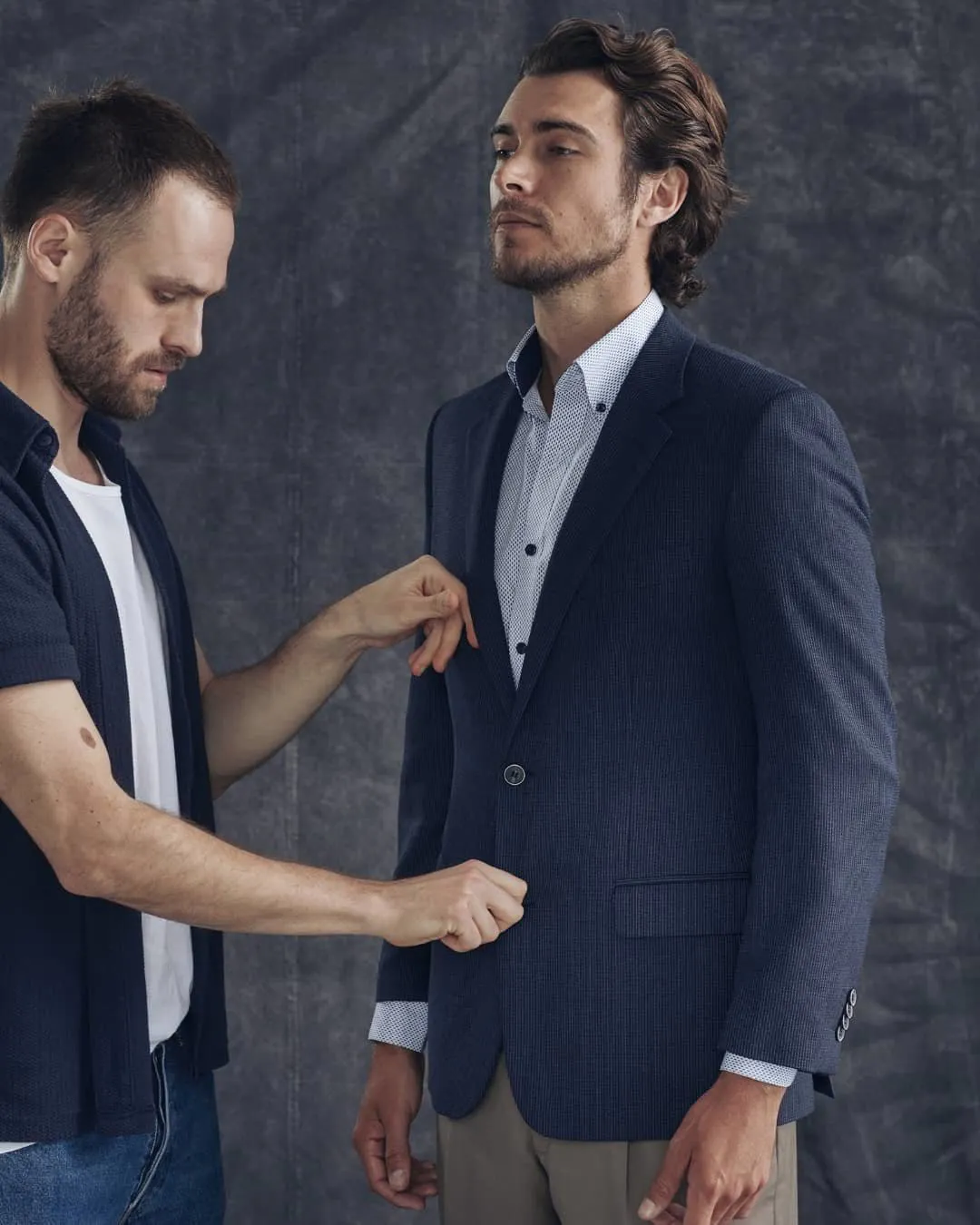
So when you have these beautiful clothes, how should you look after them?
Don’t keep your clothes unwashed. I see this sometimes in my client’s wardrobes, stuff that needs to be washed, but it’s hanging in their wardrobe. For example, a business shirt – if you wear it once or maximum twice, you will have marks on the collar and the inside of the cuffs, this needs to go through the wash straight away.
How you wash your clothes is important so that the fabric doesn’t get damaged. Use stain remover spray, wash at 30 degrees, no tumble dryer, dry in the shade on a hanger, iron inside out while damp. If you have winter sweaters, before packing them for summer, give them a slight air through, just put them outside. Treat your clothes gently and with respect, and they will last a lot longer and stay looking good.
So, wash your clothes, and fold your clothes properly.
Lighter knitwear is better stored on hangers with wider shoulders, rather than folded, to avoid creases in the middle that don’t go away. Same with t-shirts. I keep all my t-shirts on very thin hangers, it saves me potential steaming or ironing. You just put on a t-shirt and it looks nice. I actually don’t own an iron. I do own a steamer. But I don’t work in an office environment. You probably would need an iron if you worked in a corporate role.
Take care of your shoes too! If we are talking about good quality leather shoes for men, I’d recommend storing them with shoe trees – basically wooden inserts that you put inside the shoes to help to keep their shape. From time to time, give them a wipe and treat them with clear shoe cream, to nourish the leather and prevent it from cracking.
Don’t wear stuff often. If you have one pair of shoes and you wear them every day, you’ll wear them out much faster. If you have three pairs of shoes and you rotate them, they will all last a lot longer.
Try to avoid dry cleaners as much as possible.
I have people who would go to dry cleaners like it’s a washing situation. It’s not the right approach. Dry cleaners use chemicals that potentially destroy the structure of the fabric itself. It becomes rigid, flat, it won’t sit, fold, the way it is supposed to, after too much drycleaning. So if you have, for example, a suit with a minor stain, I’d recommend you to take care of that stain separately.
Also sometimes dry cleaners don’t really know how to iron things. You can give them a blazer and instead of having a natural fold on the lapel, you could get a sharp crease because someone pressed your lapel because they didn’t know that this blazer costs $2,000 and someone rolled the lapel by hand, and your jacket is ruined. So if you do use a dry cleaner, use the best you can get. Regal would be the best that we can get here in Auckland.
So basically look after your clothes. Don’t put dirty stuff inside your wardrobe. Have a rotation of items so they last longer. Take care of your clothes and they will take care of you!
Lastly, the presentation and accessibility of your clothes at home is also key to making the most of your collection. It’s important to be able to see everything and have a well-lit space for your clothes. It’s such a shame to see nice quality clothing thrown into poky corner shelves and forgotten about. It doesn’t need to be state of the art, but it should be fit for purpose and respectful of your clothing.
I think we can all take away some valuable learning from this, thank you so much Vlad!
Other articles
June 7, 2023
The elements of style from a personal stylist
Vlad Tichen talks us through perfecting your personal style and caring for your dream capsule wardrobe
April 17, 2023
Why choose sliding wardrobe doors
Wondering whether sliding wardrobe doors will work in your space?
Nothing found.
Why choose sliding wardrobe doors
Why choose sliding wardrobe doors
Wondering whether sliding wardrobe doors will work in your space? This type of door offers many benefits, and with an endless range of colour options, they can finish a room beautifully. Read on to find out how sliding wardrobe doors could elevate your space and add value to your home.
Are sliding wardrobe doors right for you?
Access
Sliding doors allow you to see inside the whole height of the wardrobe from top to bottom, so you’ll always be able to see the entire contents of the space. It’s the best access you’ll get to the left and right hand sides of the wardrobe, and with three doors on a triple track, you can get up to 70% of the opening accessible at any time. The sliding doors at Boston Wardrobes are a standard 2440mm high, letting you see and reach the top shelf easily. We also have the ability to do overheight doors up to 2700mm.
Space
Sliding wardrobe doors take up less floor space than hinged or bifold doors as they do not protrude into the room. This is particularly important in smaller spaces, where real estate for other bedroom furniture, such as bedside tables, is at a premium.
Aesthetic
There are endless design options when it comes to sliding doors, making it a breeze to either match your interior decor or make a bold statement. Depending on the door type you choose, you could select from 100s of colours or woodgrains, divide each door to include sections of mirror or tinted glass, or have them painted a specific colour. There are also frameless mirror options for a sleek and seamless finish.

Organisation
If you currently have an existing wardrobe without doors, it is needless to say that the room will feel a lot more tidy and organised by adding some sliding doors. Having the ability to enclose the contents of the wardrobe when not in use will open up the room and give you more space to enjoy your surroundings. Keeping the doors closed will also reduce the amount of dust entering the wardrobe.
Materials
At Boston Wardrobes, we design and make your wardrobes and wardrobe doors right here in New Zealand. We use sustainably sourced New Zealand-made MDF substrate, laminated with quality melamine sheets, available in a wide variety of finishes and colours from our local suppliers. There are also sliding wardrobe doors with a soft close option available, to make them super quiet.
Cost
We get it, sometimes the budget needs to take precedence. Sliding doors don’t need to cost the earth! At Boston Wardrobes, we have such a wide range of sliding wardrobe door options that we’re confident we can stay within budget. In fact, we know you’ll be pleasantly surprised by how affordable sliding doors can be.

If you are ready to take the next step in your wardrobe journey, Boston Wardrobes has Auckland’s largest wardrobe showroom. Come in to see and feel all of the different types of sliding wardrobe doors available to finish your space. Our wardrobe experts would love to help you decide which system is right for you.
Other articles
June 7, 2023
The elements of style from a personal stylist
Vlad Tichen talks us through perfecting your personal style and caring for your dream capsule wardrobe
April 17, 2023
Why choose sliding wardrobe doors
Wondering whether sliding wardrobe doors will work in your space?
Nothing found.
Wardrobe design rules from the experts
Wardrobe design rules from the experts
When you’re ready to take the plunge and start designing your dream wardrobe, it’s good to start with a solid wardrobe design strategy to ensure your new wardrobe meets all of your needs. Here are our top wardrobe design considerations to keep in mind.
What are the must haves?
First up, time to take stock. Have a think about the items in your wardrobe: are you the queen of shoes, the king of suits or the ace of designer handbags? Do you have more clothing that needs hanging or will shelves serve you better? Do you have lots of long coats or gowns? What do you need to store in drawers? Will you be sharing the wardrobe? All of these questions will help you to determine what sort of structure your wardrobe design should have. It’s also worth considering what works and what doesn’t work in your current wardrobe.
How much space do you have?
Regardless whether you are working with an existing space or building or renovating, the space will need to be assessed and accurately measured. Keep note of power points, windows, doors, ceiling height, door jambs etc. At Boston Wardrobes, we are experts at making the very best use of any space, but there are guidelines to how much space is ideal. These are our recommended minimum dimensions for optimal wardrobe design:
- 1800mm length per person (2400mm for walk-in or walk-through wardrobes)
- 600mm internal depth (suit jackets and coats require at least this)
- 400mm shelf depth and width (folded garments are typically 350mm wide/deep)
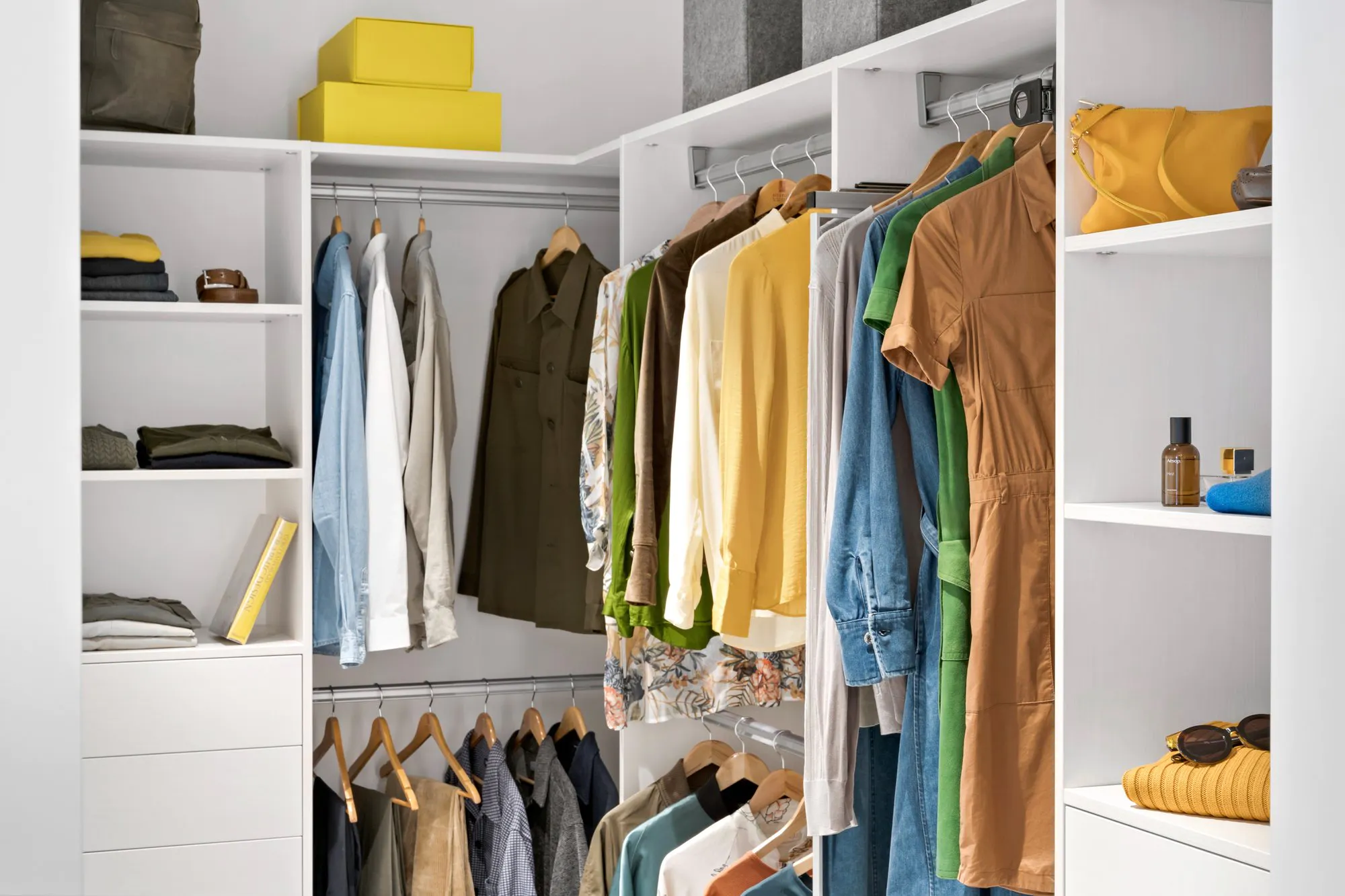
Wardrobe design basics
The main components of wardrobe design are as follows
Hanging space
Usually you would have a mixture of long hang, short or half hang and possibly three-quarter hang, your wardrobe design will be different depending on what you need to store. If two people will be sharing the wardrobe, each would ideally have their own hanging space.
Shelving
Shelves are great for jeans, jumpers, t-shirts, and any items you want to store folded. Shelf height is a standard 400mm but can be adjusted according to your requirements, for example if you have lots of handbags you need to store. You can also store smaller items on shelves by adding baskets or containers.
Drawers
Storing underwear, socks, gym clothes and other smaller or delicate items might be best in a drawer. Drawers come in multiple depths and can be from 400mm to 1200mm wide. They can be open topped, push-to-open or have handles. All of the drawers at Boston Wardrobes come with Hettich runners and a soft-close. Keep in mind that drawers are one of the more expensive components of wardrobe design, so adding or removing drawers will impact the overall budget.
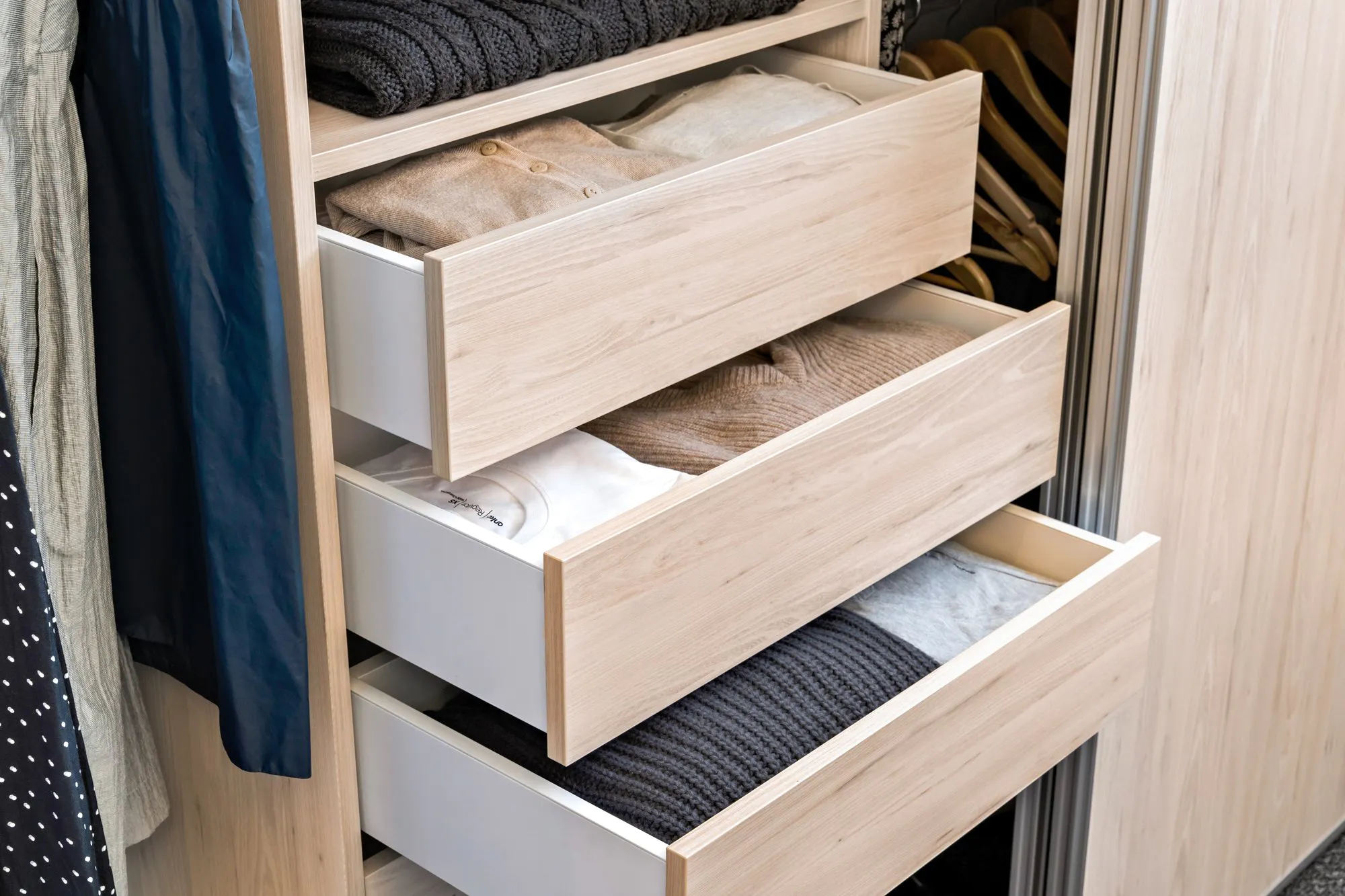
Shoe space
Having specific space to store your shoes not only helps to organise your wardrobe, but also to protect your shoes. There are several options for this including shoe shelves, shoe drawers and, in some ranges, shoe racks. You can have them running along the bottom of the space or dedicate a vertical space to them. This will depend on how much space you have to work with, how many shoes you have and, of course, your personal preference.
Accessories
Finishing touches for your new wardrobe design could include a full length pull-out mirror, bespoke pull-out trouser racks, belt or tie racks, hidden jewellery drawers, or LED lighting. These accessories will ensue all of your items are stored beautifully, with everything immediately accessible and easy to see.
Doors
Adding doors to your brand new wardrobe design will keep your space looking neat and tidy and protect your clothes from dust. You can choose sliding wardrobe doors, bi-fold or hinged. Available floor space will play a key role in this decision, as will access requirements, whether this is a walk-in, walk-through or reach-in wardrobe, and technical details such as door jamb dimensions. What are door jambs? They are the wooden framing around door openings. Most of our doors require door jambs.
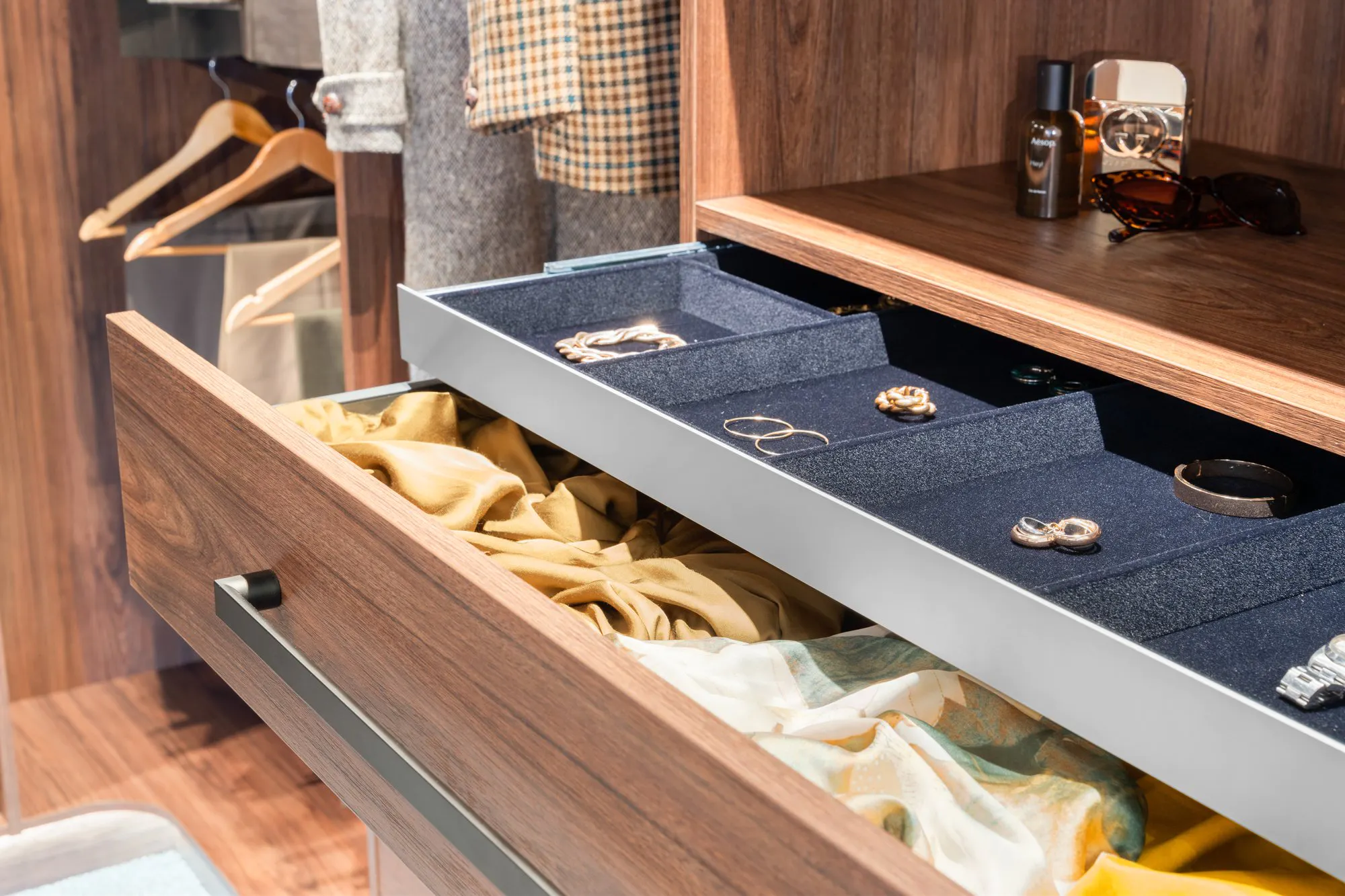
Materials
Now it’s time to decide on how you’d like your wardrobe to look. Finish your wardrobe design in a luscious, textured woodgrain, opt for a block colour to complement your bedroom palette, or choose a minimalist white. Would you like your wardrobe to have back panels on it? Or perhaps you could make the back wall shine through with a pop of colour or a beautiful wallpaper. The possibilities are endless and wardrobes need not be standard and boring, we want you to fall in love with your wardrobe every day!
Next Steps
Ready to talk wardrobe design and wardrobe doors? We can’t wait! Bring your measurements + photos or plans into our beautiful Grafton showroom to see the dozens of options available, and we can start crafting your perfect wardrobe immediately. If you need help measuring, check out our handy guide below.
At Boston Wardrobes, we are passionate about helping homeowners create smarter, more functional spaces in their home. We have 35 years experience designing and building wardrobes and doors for Aucklanders
Other articles
June 7, 2023
The elements of style from a personal stylist
Vlad Tichen talks us through perfecting your personal style and caring for your dream capsule wardrobe
April 17, 2023
Why choose sliding wardrobe doors
Wondering whether sliding wardrobe doors will work in your space?
Nothing found.
Wardrobe storage solutions & tips
Wardrobe storage solutions & tips
At Boston Wardrobes, we love to make your mornings easier and more enjoyable by giving you beautiful and well-organised wardrobe storage. When your clothes are organised and easily accessible, you save time looking for things and avoid the frustration of not being able to find the items you want. Effective wardrobe storage will also extend the life of your clothes by protecting them and keeping them looking good.
Start with what you have
Clear it out!
The best way to get the most out of your wardrobe storage is to do a regular clear-out. This ensures space isn’t being taken up by clothing that isn’t being worn, giving your clothes more room (leading to better organisation), and making space for any new season finds.
Categorise
Group your clothing by category so that you can store like with like. Tops, jumpers, pants, gym clothes, should all have their own shelf or drawer inside your wardrobe. Grouping hanging items together also helps to keep everything organised; shirts, blouses, skirts and jackets should be hanging in groups together.
Keep it in sight
Out of sight, out of mind! Remember that if you can’t see an item, you are more likely to forget about it. Keeping everything within eye sight will not only make it easier to find things, but it will ensure you are getting more wear out of your whole wardrobe.
In-season wardrobe storage
Consider storing clothing away seasonally. Taking your heavy winter coats, jumpers and jackets out of your wardrobe when they are not in use will free up storage space for the clothes you are wearing right now. The more space you have in your wardrobe, the easier it will be to find what you need!
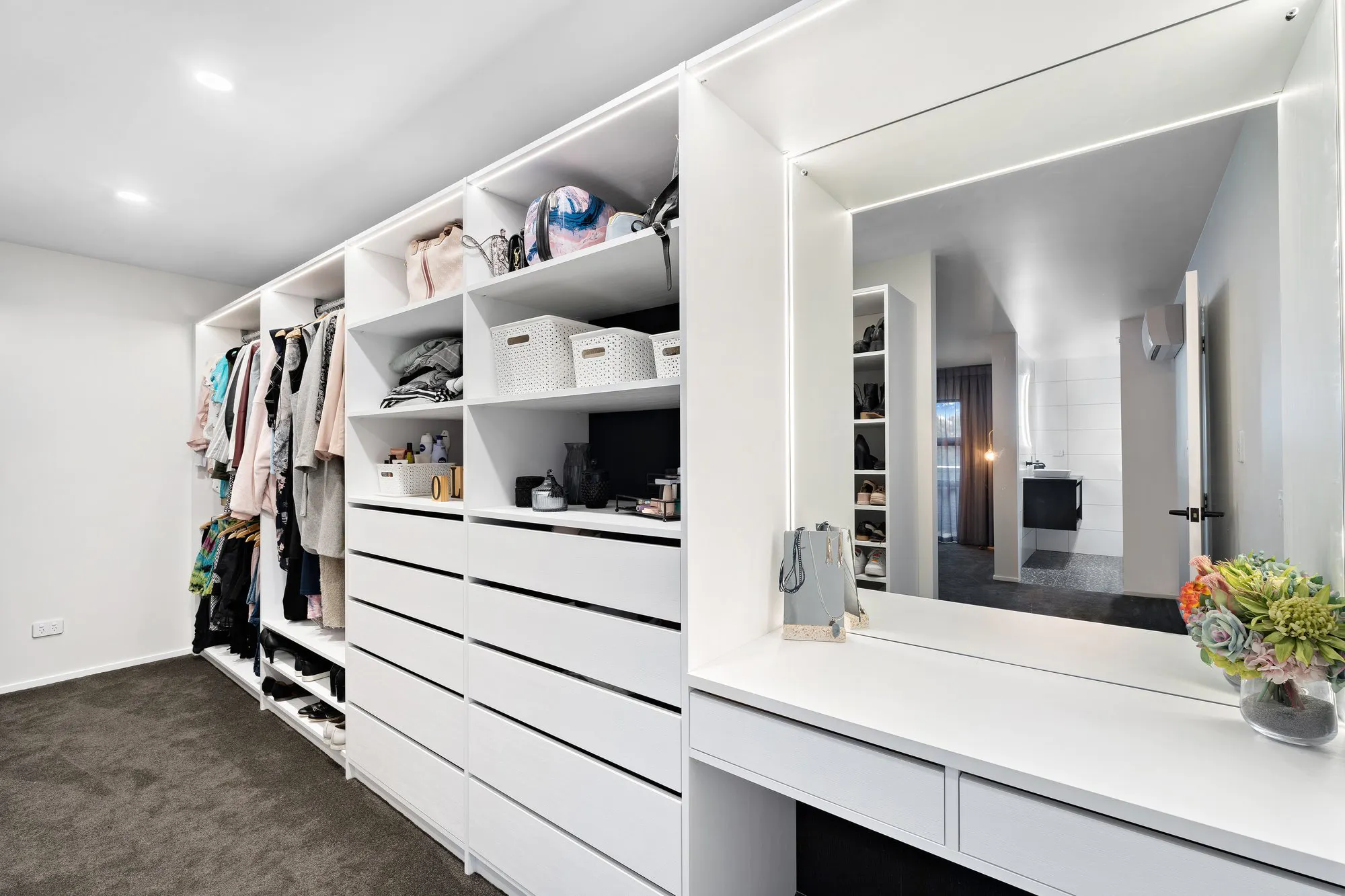
Useful additions to your wardrobe storage space
- Drawer dividers are an inexpensive way to help keep smaller items such as underwear, bras and socks organised and easier to access.
- Choose slimline clothes hangers to maximise hanging space in your wardrobe. Wooden and velvet are the best for your clothes.
- Hooks can be added for storing scarves, belts and bags. At Boston wardrobes we also have a range of wardrobe accessories that address these items specifically, making them even easier to store.
- Shoes can be better stored on a shoe shelf. Choose from one of the multiple shoe options at Boston Wardrobes for the most beautiful shoe storage available. Pro tip: fit more shoes on a shelf by placing each pair with one shoe facing in and one facing out.
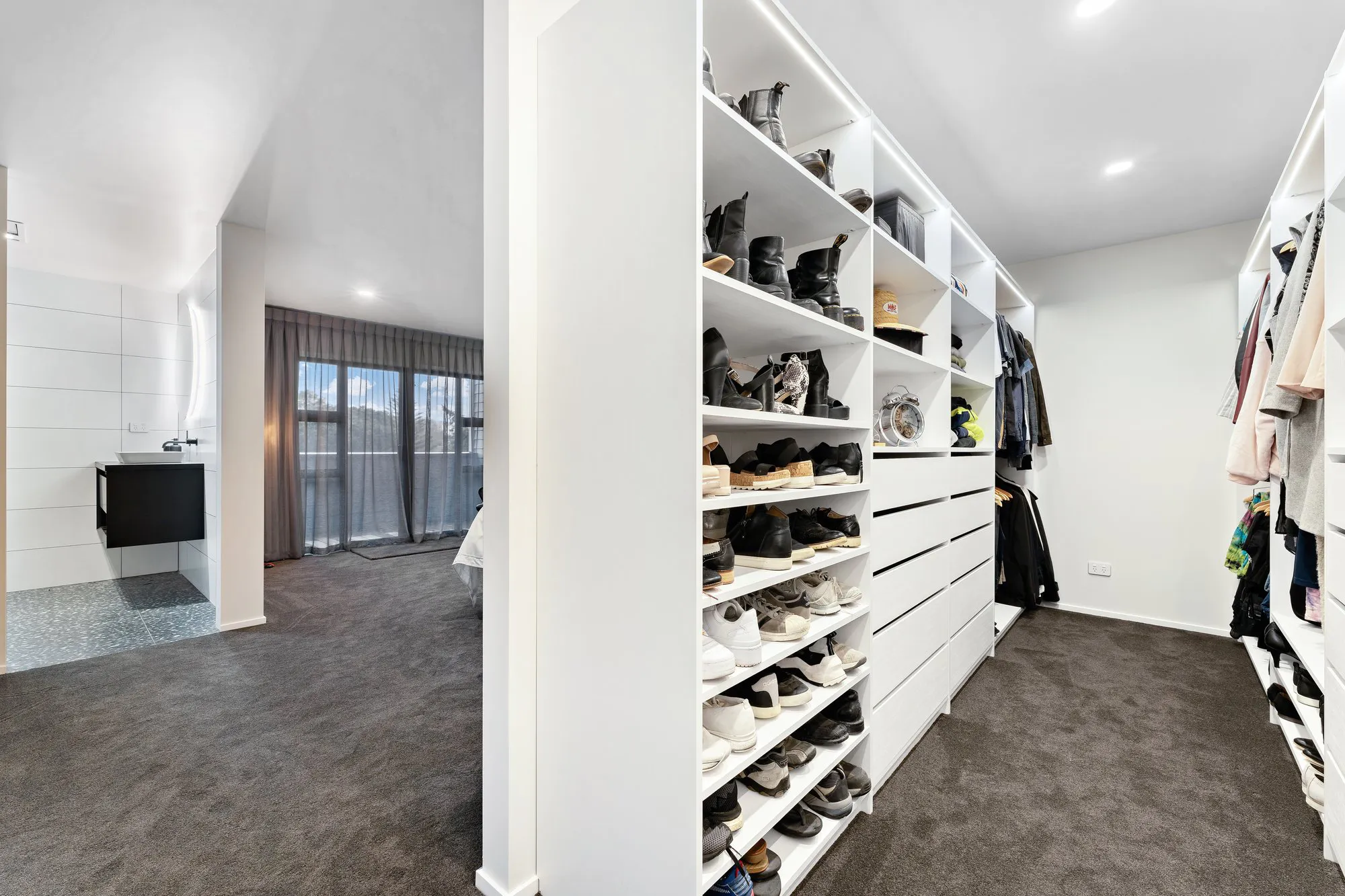
Shoe space
Having specific space to store your shoes not only helps to organise your wardrobe, but also to protect your shoes. There are several options for this including shoe shelves, shoe drawers and, in some ranges, shoe racks. You can have them running along the bottom of the space or dedicate a vertical space to them. This will depend on how much space you have to work with, how many shoes you have and, of course, your personal preference.
Accessories
Finishing touches for your new wardrobe design could include a full length pull-out mirror, bespoke pull-out trouser racks, belt or tie racks, hidden jewellery drawers, or LED lighting. These accessories will ensue all of your items are stored beautifully, with everything immediately accessible and easy to see.
Doors
Adding doors to your brand new wardrobe design will keep your space looking neat and tidy and protect your clothes from dust. You can choose sliding wardrobe doors, bi-fold or hinged. Available floor space will play a key role in this decision, as will access requirements, whether this is a walk-in, walk-through or reach-in wardrobe, and technical details such as door jamb dimensions. What are door jambs? They are the wooden framing around door openings. Most of our doors require door jambs.

Vertical space in your wardrobe
Does your current wardrobe storage space only have a hanger bar? Many houses in New Zealand were built with minimal regard for wardrobe storage. The standard in most older houses is the basic shelf and rail. You can better utilise the vertical space by adding hanging organisers and raising shelves.
A professional wardrobe storage solution
When you need a wardrobe storage solution that efficiently and beautifully meets all of your unique needs, it’s time to think about a professional approach. Talking to a wardrobe designer will help you identify the gaps in your current wardrobe storage, and together you can get to a bespoke wardrobe design that ticks all of the boxes.
If you are ready to take the next step in your wardrobe journey, Boston Wardrobes has Auckland’s largest wardrobe showroom. Come in to experience, see and feel all of the different types of wardrobe storage solutions and wardrobe doors we have on offer. Our wardrobe experts would love to help you decide which wardrobe system is right for you.
Other articles
June 7, 2023
The elements of style from a personal stylist
Vlad Tichen talks us through perfecting your personal style and caring for your dream capsule wardrobe
April 17, 2023
Why choose sliding wardrobe doors
Wondering whether sliding wardrobe doors will work in your space?
Nothing found.
Wardrobe systems for small spaces
Wardrobe systems for small spaces
Apartment living is increasingly becoming part of Auckland life as councils rewrite suburban plans and allow more multi-story buildings to sprout up around main arterial routes.
Smaller spaces require a clever rethink on how to manage storage to balance both function and form. Get it wrong, and you risk creating an impractical space that creates unnecessary stress every time you use it.
Thankfully, our design experts have fantastic experience in this area and can guide you through the process to make the most of the limited space you have. To get you started, here are three ideas to consider when starting a project where space is at a premium.
Understand the limitations you have – other than space
Smaller spaces can have unique restrictions, reducing the type of wardrobes you are able to install. For instance, our wide range of floor mounted wardrobes are a common solution for apartment dwellers who are not able to, due to construction style or body corporate rules, fix items directly to the walls.
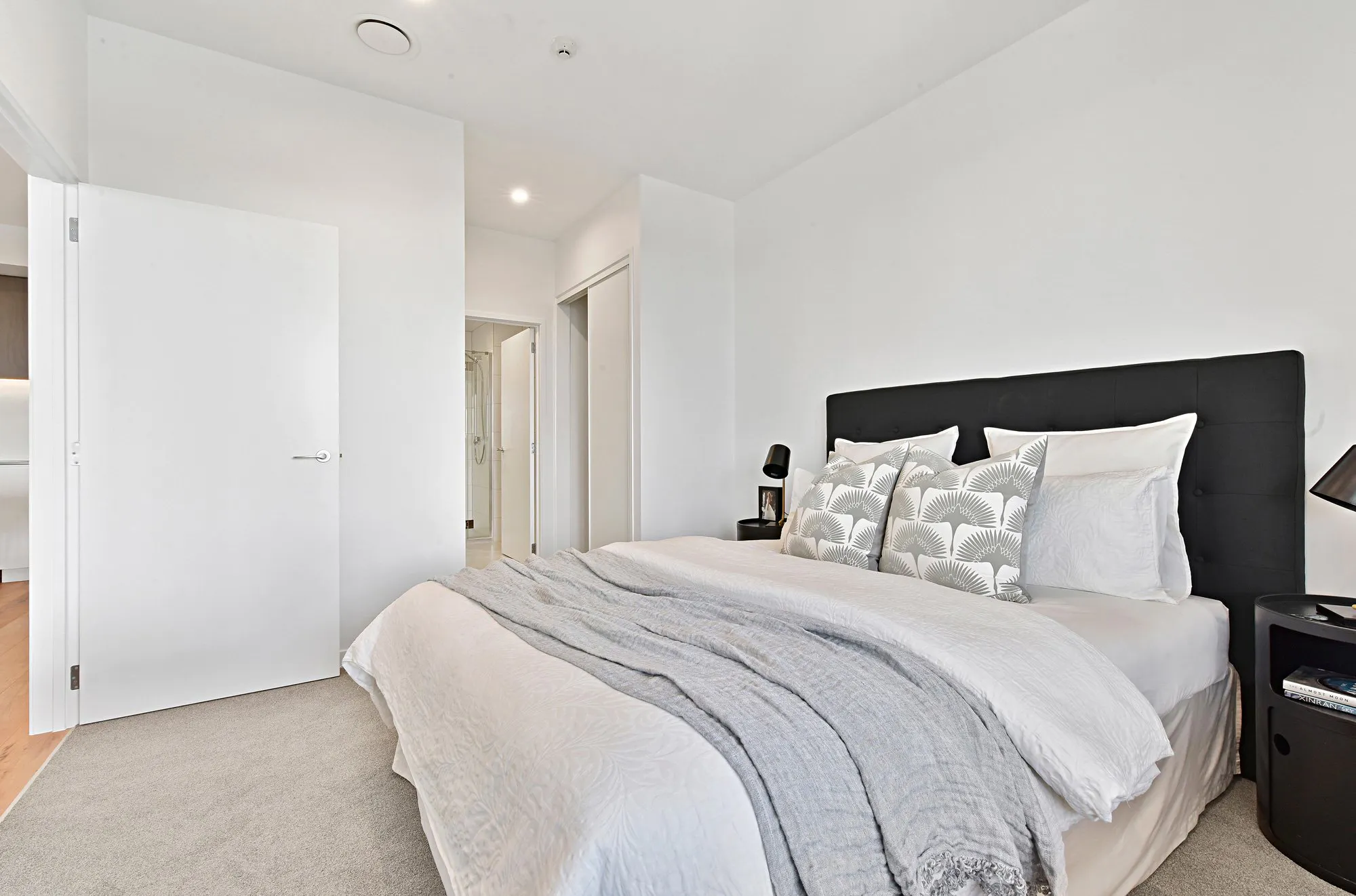
Simple is good – super simple is even better
Smaller spaces will require clever design thinking to achieve what larger spaces easily cater for, such as space to hang both long and short items together. Room layout needs to be considered carefully as well, with less wall space potentially available and windows to work around.
Perhaps the best solution has shelving or drawer units sitting alongside a full length hanging wardrobe space, because windows mean you can’t extend the wardrobe space any further. You can also think about a separate storage area for out-of-season outfits, as not using your wardrobe to store all of your clothes at the same time will help free up space.
Compromise is not a word most want to include in creating their ideal wardrobe but in smaller spaces, this is often the theme of the design process. Through thoughtful compromise, we can create bespoke designs that will increase the usability of even the trickiest of spaces.
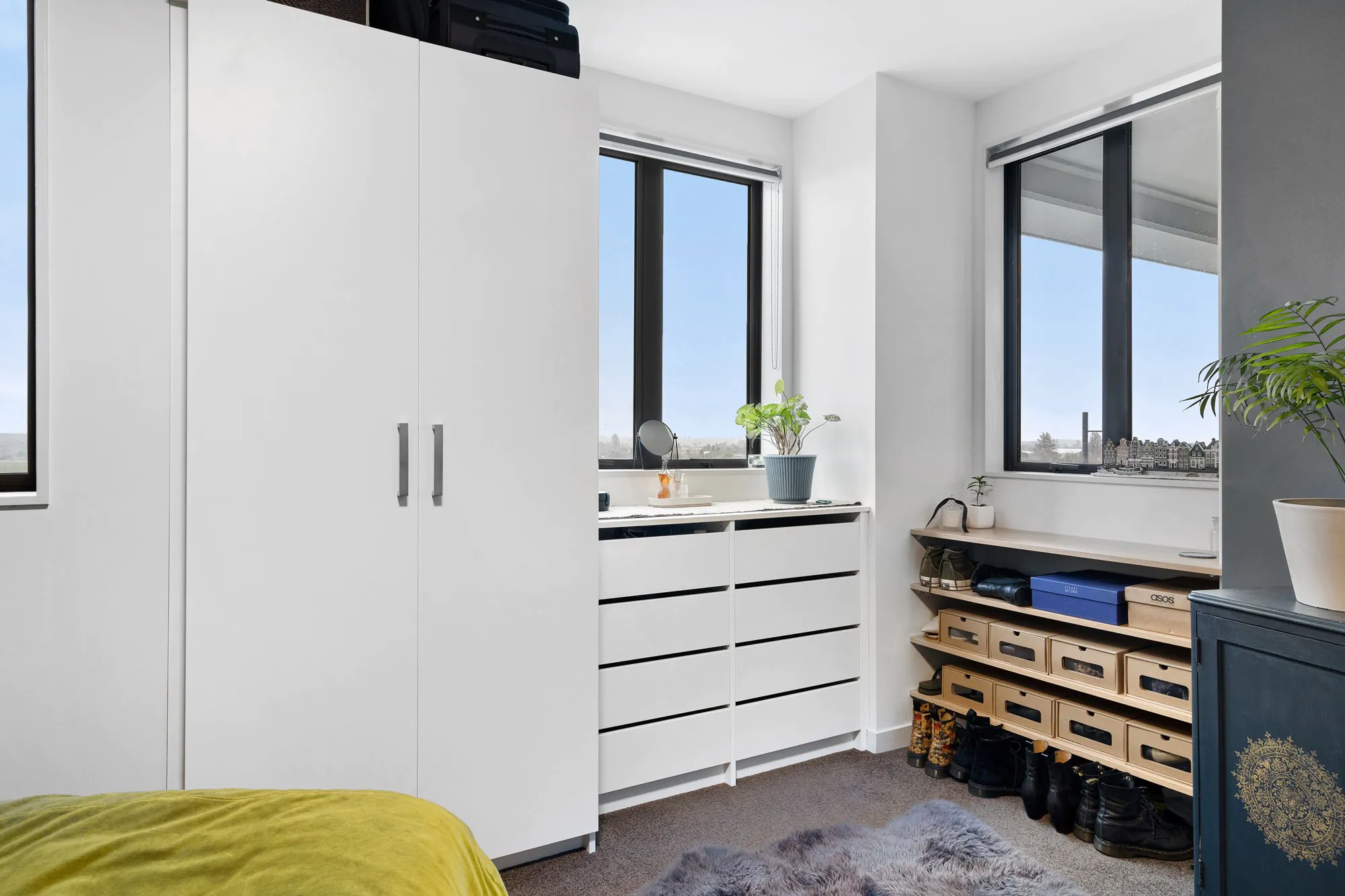
The Showroom is Your Friend
Thankfully the Boston Wardrobes Showroom experience will make the process of compromise an easy one. To make the best decision, we feel you need to see and feel the options you are deciding on. Especially when it comes to designing for smaller spaces.
Arrive with an idea of the measurements you are working with. Then, our wardrobe design experts will walk you through all the options to make it as easy as possible to decide on the ones that work for you and your space, however small it may be.
Other articles
June 7, 2023
The elements of style from a personal stylist
Vlad Tichen talks us through perfecting your personal style and caring for your dream capsule wardrobe
April 17, 2023
Why choose sliding wardrobe doors
Wondering whether sliding wardrobe doors will work in your space?
Nothing found.
Creating the perfect walk-in wardrobe
Creating the perfect walk-in wardrobe
You’re dreaming of the perfect walk-in wardrobe, but you have no idea where to start – we hear this a lot. This article will take you through the six steps we commonly work through with our clients to help them achieve their goals within the limitations of their space and budget.
1. How much space do you have?
First up, let’s get clear on the space you have for the wardrobe. Whatever happens, this is going to be one of the hard limits to your creation, as you only have so much space to work with. Begin measuring up to create a rough plan on paper.
For some, this could mean getting out the measuring tape – for others it could be looking at the building plan to see how much capacity has been allowed for. Either way you need to end up with some shapes on paper that relate to the space for your new dream walk-in wardrobe.
2. How should you use the space?

Now, let’s work on how you want to use the space. It’s not practical to fill the whole space with storage and leave no room for you. So it’s good to think through what you want to do in the space as well as what you need to store.
For instance, you may want it to be a place to put on makeup, or have enough space to check out your outfit in a full-length mirror. Where the space needs to cater for more people than just you, make sure you check in with all parties involved to create a list of needs to suit everyone.
3. Types and amount of clothes that need storage

Let’s look at the amount and type of items you want your walk-in wardrobe to contain. Our clothes are as individual as we are – those in corporate life will have storage needs that differ from those with a more casual work attire.
Shoes and accessories could be a small part of someone’s wardrobe but a major part of someone else’s. It goes without saying that women and men have different needs too. For instance, the length of a lot of women’s clothing is generally a lot longer than most men’s.
Take your time to make a list of the type of clothes requiring storage. Don’t worry too much about if it will all fit – we can take care of that later – just build a complete list.
4. Don’t forget items that may not immediately seem logical
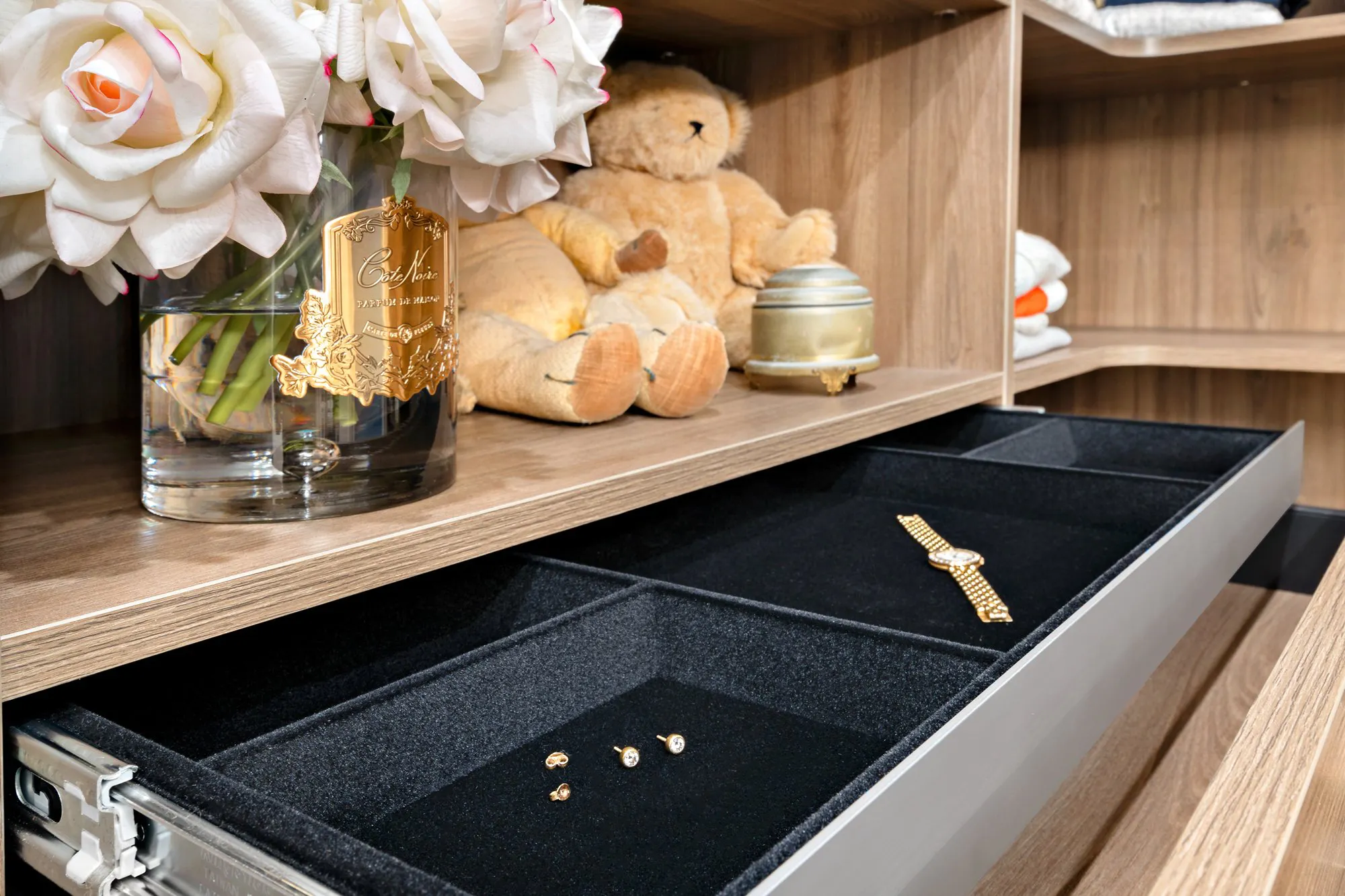
It’s not all about clothes. For example, a well designed but hidden jewellery tray could put the finishing touch on your ideal walk-in wardrobe. Allowing for space to store bed linen could take up a small amount of room but save you countless trips up and down stairs.
The light you have to work with in your walk-in wardrobe needs to be thought through too. Windows may need to be frosted to protect privacy and ensure clothes are not harmed by direct sunlight. The type and amount of artificial lighting needed will depend on how you want to use your wardrobe space.
And finally, the dream might be about creating enough space for you to have a moment of peace away from the family. A place to sit down, apply some makeup, pick the right clothes for the occasion and collect yourself before heading out.
Think of these first planning stages as the foundation of your project. Take your time to work through the steps, building a solid understanding to support your wardrobe project.
5. Move from plans to options – with the help of the Boston Wardrobes Wardrobe Design Showroom

It’s time to move from thinking and planning to seeing and discovering the wide range of options available to you. The Boston Wardrobes Showroom is the ideal next step to make your dream a reality.
With the help of one of our wardrobe design experts, you can see multiple walk-in wardrobe examples in one place, deciding exactly what options suit your requirements.
- Not sure how many drawers you need? How big they should be?
- Will 3/4 length hanging work for your suits?
- Should shoes be at eye level or running along the bottom?
- How much room do you need for a sitting makeup station?
- Which accessories will add the most value to your design?
- Will sliding or bi-folding doors be better for the space?
- What colours and finishes will best suit your vision?
We can answer all of these questions while we explore all the ranges available at our Grafton site – New Zealand’s largest and newest wardrobe showroom.
Include the drawer system from one of our wardrobes, a sliding door from another, perhaps a makeup stand from a third – it’s as simple as selecting which parts suit your needs to create the ideal wardrobe for you.
6. Achieving the right balance between Function and Form
The Boston Wardrobe design team are experts at creating a walk-in wardrobe design that looks great, works well and is at the right price point to suit your budget. It’s a collaborative process, so you can expect a few ideas to come your way to help you end up with the perfect solution.
So there you have it – six simple steps to take you from bare space to the welcoming walk-in wardrobe of your dreams.
Time to get the measuring tape out?
Other articles
June 7, 2023
The elements of style from a personal stylist
Vlad Tichen talks us through perfecting your personal style and caring for your dream capsule wardrobe
April 17, 2023
Why choose sliding wardrobe doors
Wondering whether sliding wardrobe doors will work in your space?
Nothing found.
Wardrobe design: DIY vs. professionals
Wardrobe design: DIY vs. professionals
Us Kiwis love to DIY – some may even say it’s in our DNA. And while a can-do approach to tackling home projects and renovations is admirable, we’re not all born tradespeople! Sometimes, even if we are not too bad with a level and a hammer, the problem is not so much talent, but time, resulting in friction and frustration in the household around lack of progress.
So, if a wardrobe installation project is on the to-do list for you, there’s a few things you should consider before making a decision about whether to give it a go yourself, or to call in a professional to take care of it for you.
We’ve covered off four key factors to think about before you pull those tools out.
1. Do you have time to DIY?
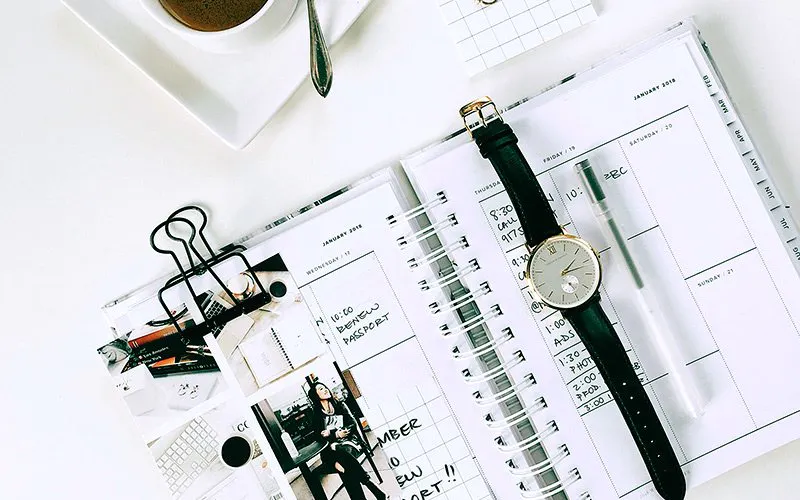
If either you or someone in the household is the handyman type, a DIY wardrobe probably doesn’t seem like too big of a task. In fact it could be the perfect project for a long weekend.
However, unless you are a builder by trade, the best way to go about this is to purchase a kit-set. And while it may seem like a simple project, even this may require more preparation than you realise. Take into account the time you will need to spend:
- Measuring: The correct measurements of your available space are essential so you don’t bring home a well-intentioned purchase that doesn’t quite fit.
- Choosing materials: Check out the quality of the materials closely. Sub-par melamine can warp over time and get damaged during installation. Make sure you check out any wire or hanging components for sturdiness too.
- Hunting for a great deal: Don’t confuse the cheapest option for the best value. At the same time, it pays to shop around to make sure you are getting the best bang for your buck.
- Constructing: Here comes the fun part. Do overestimate the time that constructing your new wardrobe will take. Rushing this part of the process will cost you in the long run.
- Troubleshooting: Allow for unexpected delays that may arise from pre-made parts not quite fitting your space, less than stellar instructions, and power tool malfunctions!
- Cleaning up: Wood + plaster + power tools = vacuum time.
If you think that in fact you don’t have the time, inclination or patience to go ahead with DIY, then call in the pros. While an initial showroom consultation with a sales representative will take around one to two hours, the rest is largely over to them. Once you have received and accepted a design and quote, you’ll need to also allow about a half hour for an in-home measurement, but otherwise there’s no need to invest anymore precious weekend hours!
2. Will you get the quality you are looking for?
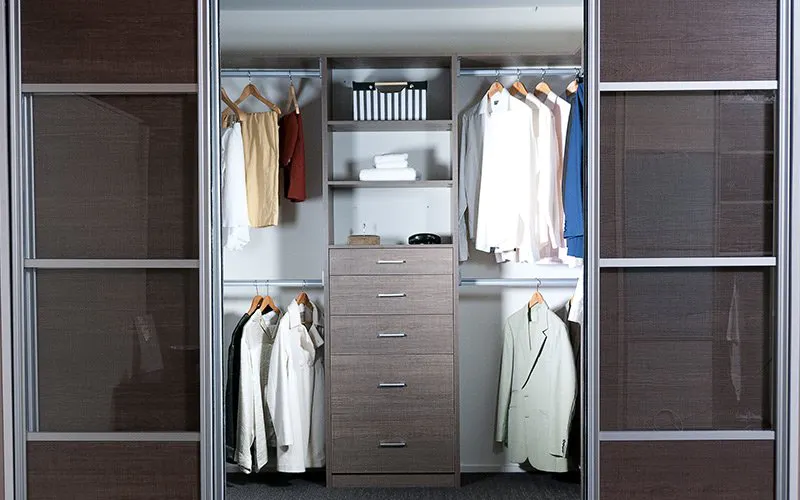
Think about the outcome and overall finish that you’re hoping to achieve. Is this a quick-fix or temporary solution? Or do you want a customised design that perfectly accommodates your needs?
If you’re keen on a kit-set, be sure to spend some time doing your research. Depending on how much you want to spend, the quality of materials and hardware included in kit-sets can vary between products. Generally speaking though, it won’t be outstanding. You will also have less choice when it comes to colours and size, as they’ll often be limited, standardised options. Where this could cause you issues is when you have an unconventional space to work with, or a particular colour scheme you’d like to stick to.
If you think you need something a little more bespoke, a reputable wardrobe company will offer a range of quality materials for organisers and doors that will be highly customisable, with options to suit your budget. The devil is in the detail, so spend some time in their showroom, reviewing their design options and the quality of their fittings, hardware, panels and mirrors, as well as the knowledge of the consultants.
3. Will you be able to make the best use of the space?

While taking a DIY approach does allow you some flexibility in design, you’ll need to get a really clear idea of the space required before you start mapping out your wardrobe or purchasing materials. If you are opting for a kitset, you won’t have a lot of room for customisation, so when deciding on which model to buy, have a think about your storage requirements and how you would like to optimise your hanging, shelving and drawer space.
We don’t all have an eye for design, and this is where the services of a professional wardrobe company really come in handy. After all, their main function is, in fact, design. Their job is to assess your individual storage requirements, take into account your available space and design a tailored solution for your needs. If you are renovating, your consultant will also be able to advise regarding any permits or wardrobe allowances your builder should take into consideration, to ensure you avoid any costly mistakes.
Bonus tip: get a guarantee

Remember, a DIY wardrobe might seem like an easy solution to your storage problems, but it may not result in a finish that works long-term, or withstands the test of time. With a professional installation also comes peace of mind – in the form of a guarantee. That means that if any issues crop up, you can pick up the phone and have them taken care of in a timely manner. Always use a reputable company with an established history, and consider their guarantee terms before making your decision.
So, will you be heading to the hardware store this weekend, or will you be handing this project over to the professionals? Hopefully the questions above have helped you get some clarity about the best way to approach your wardrobe project and the benefits that come with investing in the services of a professional wardrobe installation company.
If you have a project that needs a professional eye, get in touch! One of our representatives can take you through the best solutions for your storage requirements.
Other articles
June 7, 2023
The elements of style from a personal stylist
Vlad Tichen talks us through perfecting your personal style and caring for your dream capsule wardrobe
April 17, 2023
Why choose sliding wardrobe doors
Wondering whether sliding wardrobe doors will work in your space?
Nothing found.
How much will a new wardrobe cost?
How much will a new wardrobe cost?
If you’re in the market for new storage, it’s likely that one of the first questions you’ll be asking is: how much will a new wardrobe cost me?
You’re not alone. Unlike a lot of other consumer products in the market, wardrobes are “price invisible”. In other words, thanks to advertising, most people have a rough idea of what consumer products are going to cost them – cars, refrigerators, mobile phones, furniture, clothes… But wardrobes? Nope. It’s not surprising that you’ve come in search of an answer.
Why the mystery?
The huge range of designs, sizes, colours, accessories, and technical complexities of the installation of a wardrobe can create a large disparity in pricing between one wardrobe design and another. For example, a walk-in wardrobe in an average house can cost anywhere from $2,000 to $15,000.
What makes this price range so broad, and how can you get an idea of what kind of budget you’ll need to set aside for your own wardrobe?
Well, it all depends on your unique storage requirements and the particulars of your available space. To help you get a better understanding of how far your dollar will go, here are six key factors to consider that will influence the final cost of your new wardrobe.
The images above demonstrate how wardrobes of the same size and basic layout could vary greatly in price. By using a different product range, adding more components, using colour panels, and including accessories, you would end up with very different quotes.
1. Space
Pull out your measuring tape, because the first place to start is to get an idea of what kind of space you are working with. We recommend you aim for a minimum of 1.8 metres for a reach-in wardrobe and 2.4 metres of wall space per person for walk-in wardrobes. 700mm depth will allow for hanging clothing, which can protrude as much as 600mm, with an additional 100mm for easy viewing and access.
Not surprisingly, the size of the available space will not only influence the required organiser components but also the dimensions of the wardrobe doors, which will both in turn affect the price.
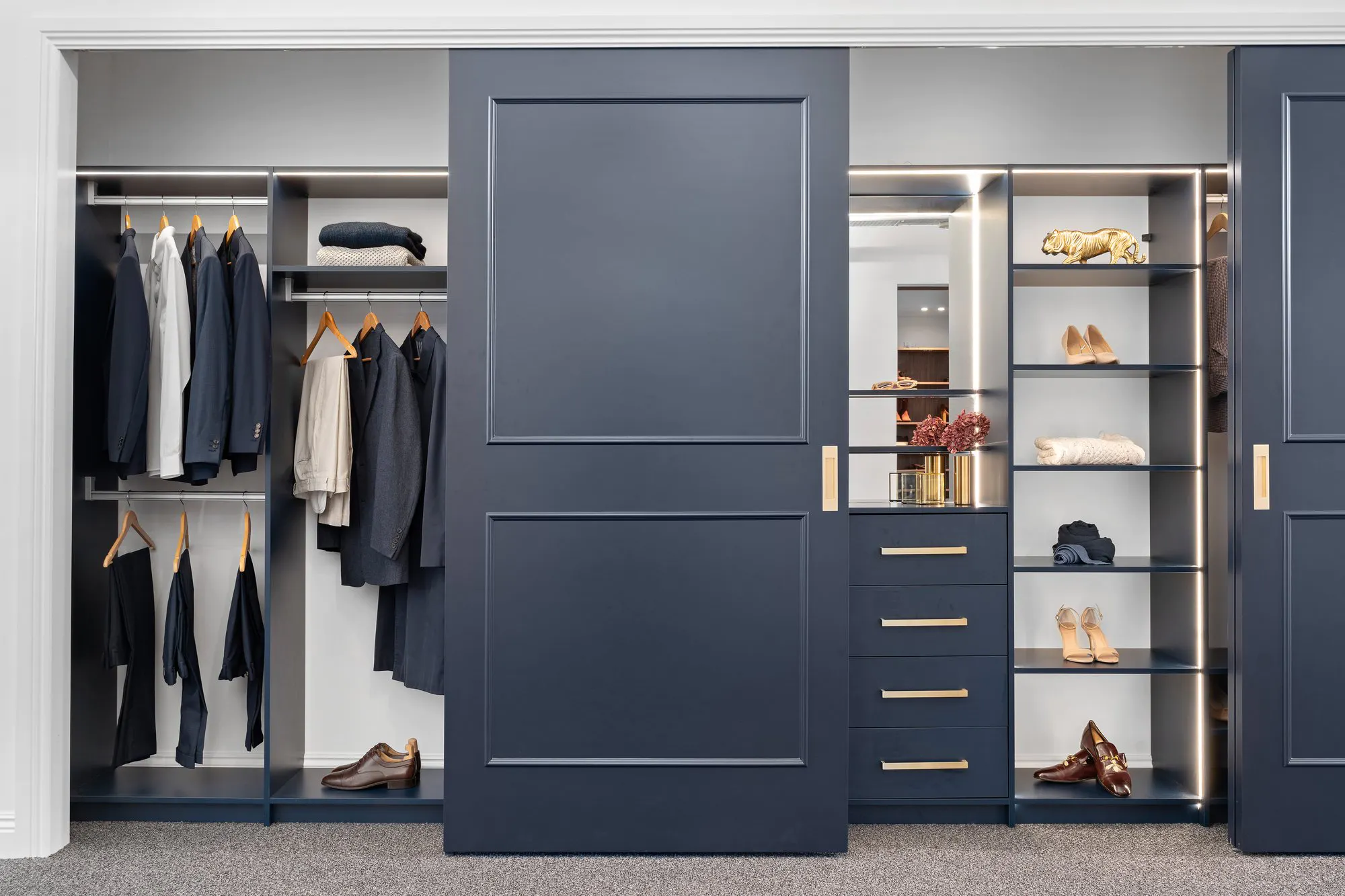
2. Drawers
Have you thought about the amount – and type – of drawers that you need?
How many do you need? How wide should they be? How high? How deep? Open-topped, push-to-open or with handles? All of a sudden, your pricing just got a lot more complex!
These decisions will be dictated by what type of garments you need to store – as well as what budget you are working towards. So have a look at your existing clothing and think about whether drawers are the best storage options for you, and how many you might require.
Undergarments including socks, hosiery, bras and underwear will typically be stored in a drawer, as well as certain types of accessories (scarves, belts) jewellery, and some clothing items (t-shirts, leggings, pyjamas)
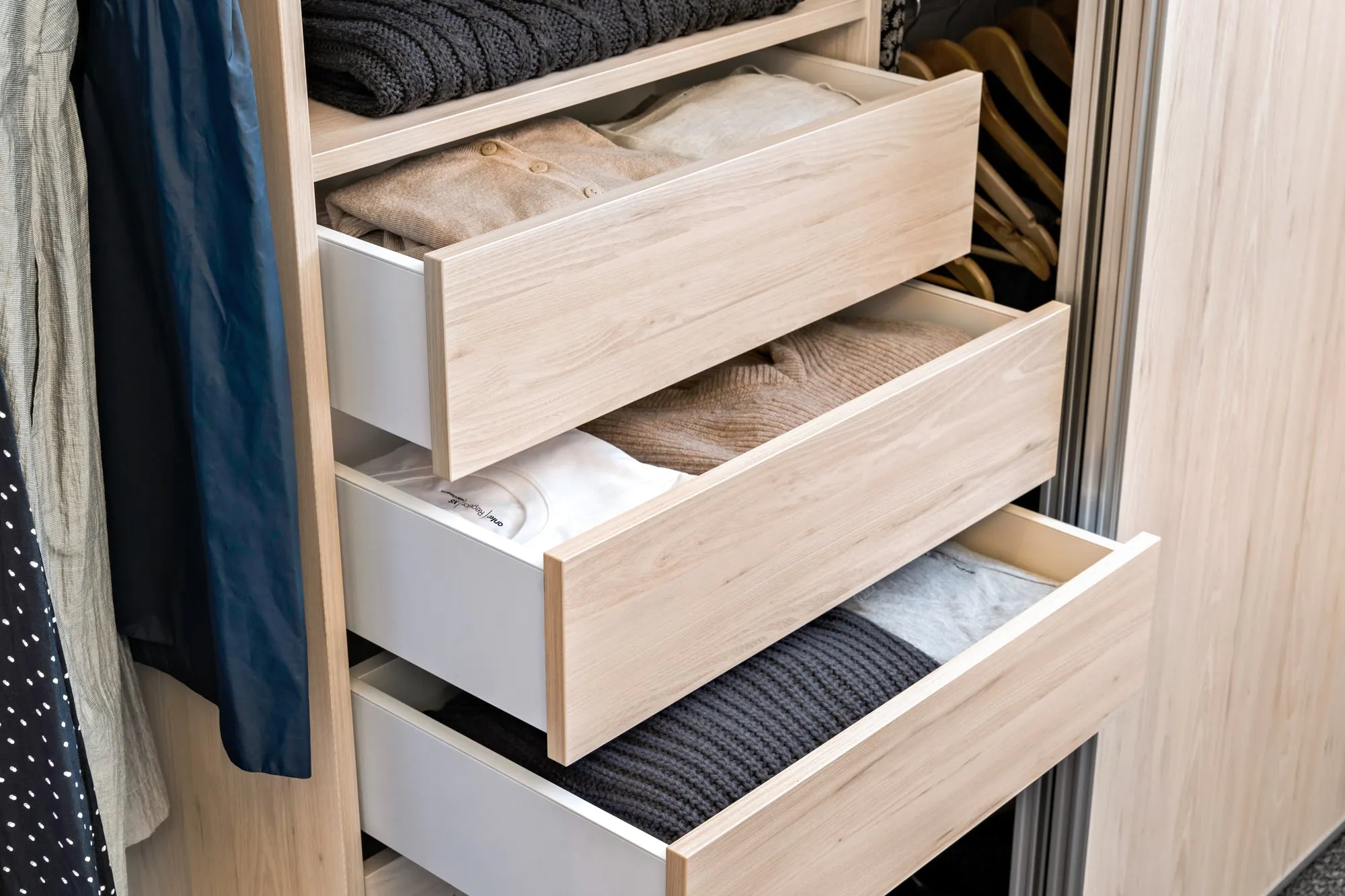
3. Shelves
Jeans, woollen jumpers and sweaters are best stored on open shelves. To give you an idea of storage capacity, you will be able to store two folded piles of clothing on 500mm or 600mm wide shelves, whereas on more narrow 400mm shelves you will only fit one pile.
Shelves have the potential to get a little disorganised, but by planning what will go on each shelf you can organise your space effectively – and avoid accidentally ending up with jumbled piles or other bits and pieces suddenly taking residence in your new wardrobe.
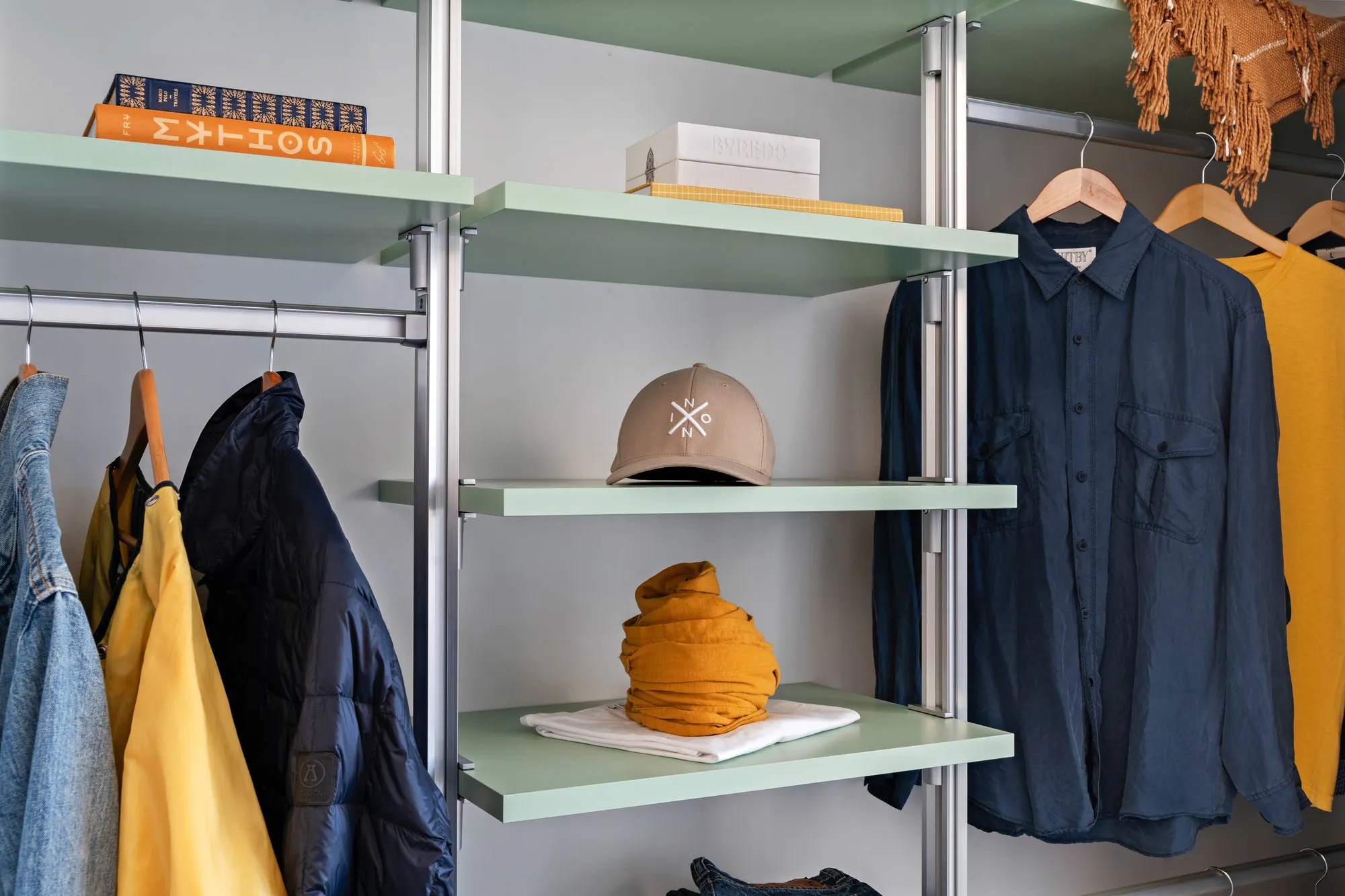
4. Hanging Space
To really optimise your hanging space, a double-hanging set-up is the way to go. This allows you to maximise clothes hanging space by having one rail above another (providing that an overall height of at least 2.1 metres is available). Long hanging space and 3/4 hanging are also handy for winter coats or full-length gowns, and can be set at custom heights depending on your requirements.
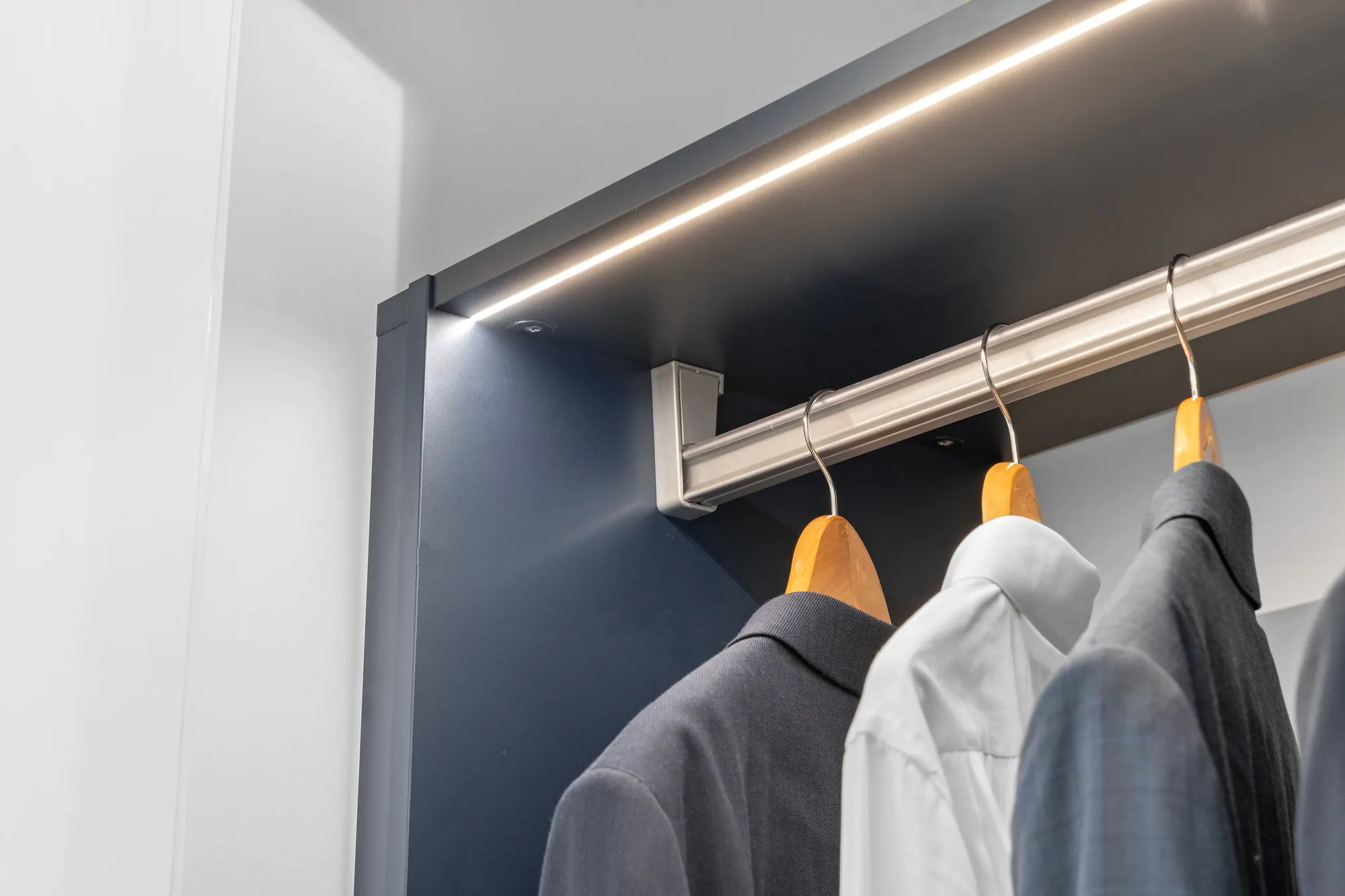
5. Accessories
Do you have an enviable shoe collection, an impressive handbag haul or a selection of ties for every day of the year?
Whatever your fashion indulgence, there are a number of available add-ons for wardrobes which can make organising your space and getting dressed in the mornings much more efficient – belt and tie racks, pull out trouser racks, specialised jewellery drawers, fold away mirrors – the list goes on. These add ons will affect the design and pricing of your wardrobe, but will also improve the overall organisation in line with your needs.
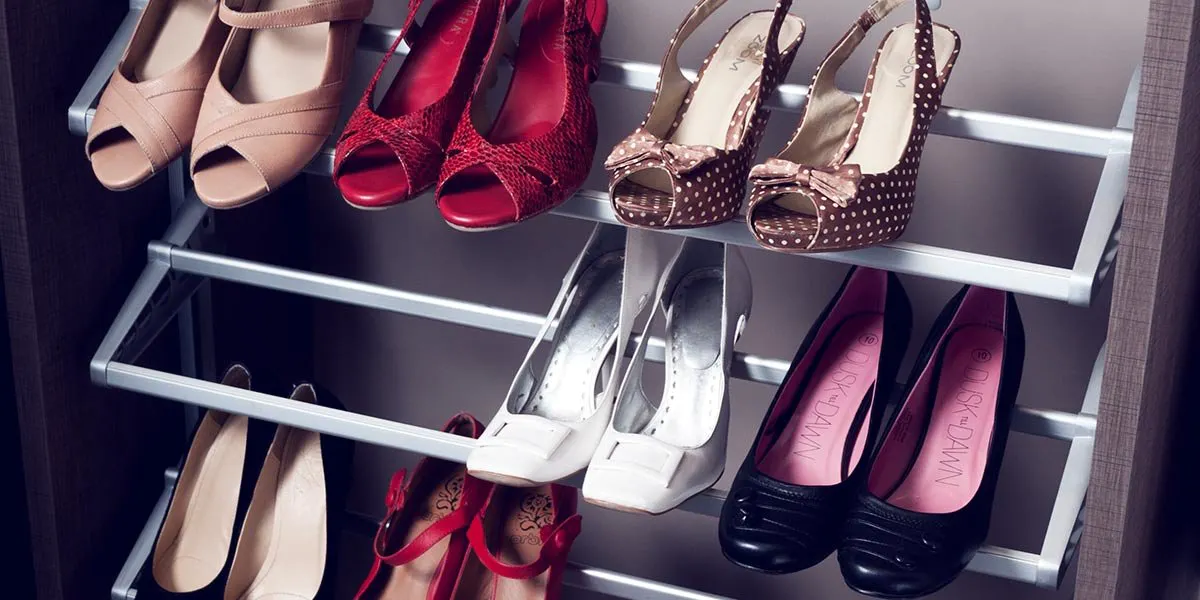
6. Installation costs
Installation costs should also be considered. It’s possible that you may need to employ the services of a builder before having your wardrobe installed. For example, if you need the opening to your wardrobe made larger to get full access to the available space, or if you need to create the wardrobe cavity by building out from an existing wall – so these costs will depend on how complex the space is that you’re working with.
Where do you start?
As you can see, there are multiple factors influencing the cost of a wardrobe, so it’s pretty tricky to give you a ballpark figure until we’ve had a chance to understand all of the variables.
Once you have discussed your particular requirements with your wardrobe sales consultant, you can then start to think about designing within the restraints of your budget.
At Boston, we have a wide range of storage and door solutions suited to all budgets. Organisers can range from the basic efficiency of our wall-mounted Select range, to the stylish elegance of the Innova range, which has the added benefit of easy dismantling if you were to move house. Our range of doors also includes options for all budgets, without ever compromising on quality and durability.
It’s good to keep in mind that whatever you decide, your new wardrobe is going to be a fixture – that is, a permanent component of your home. Quality fixtures are not only solving a problem (lack of storage space or un-practical wardrobe fitouts), but they will ultimately add value to your home. Making sure you choose a reputable company with experienced sales and installation teams will save you money in the long run – do it once and do it right.
If you’re ready to investigate further, we’d love to help. Get in touch today to organise a free consultation at our Grafton showroom.
Other articles
March 23, 2023
Wardrobe design rules from the experts
Everything you need to know about designing your dream wardrobe
February 27, 2023
Wardrobe storage solutions & tips
We’ve compiled some tips and tricks to better utilise your existing wardrobe storage space.
October 4, 2021
Wardrobe systems for small spaces
Smaller spaces require a clever rethink on how to manage storage to balance both function and form

